VW Mk8 Golf GTI 2021 & 1981 Mk1 Golf GTI Drive Review : Hatch Fun
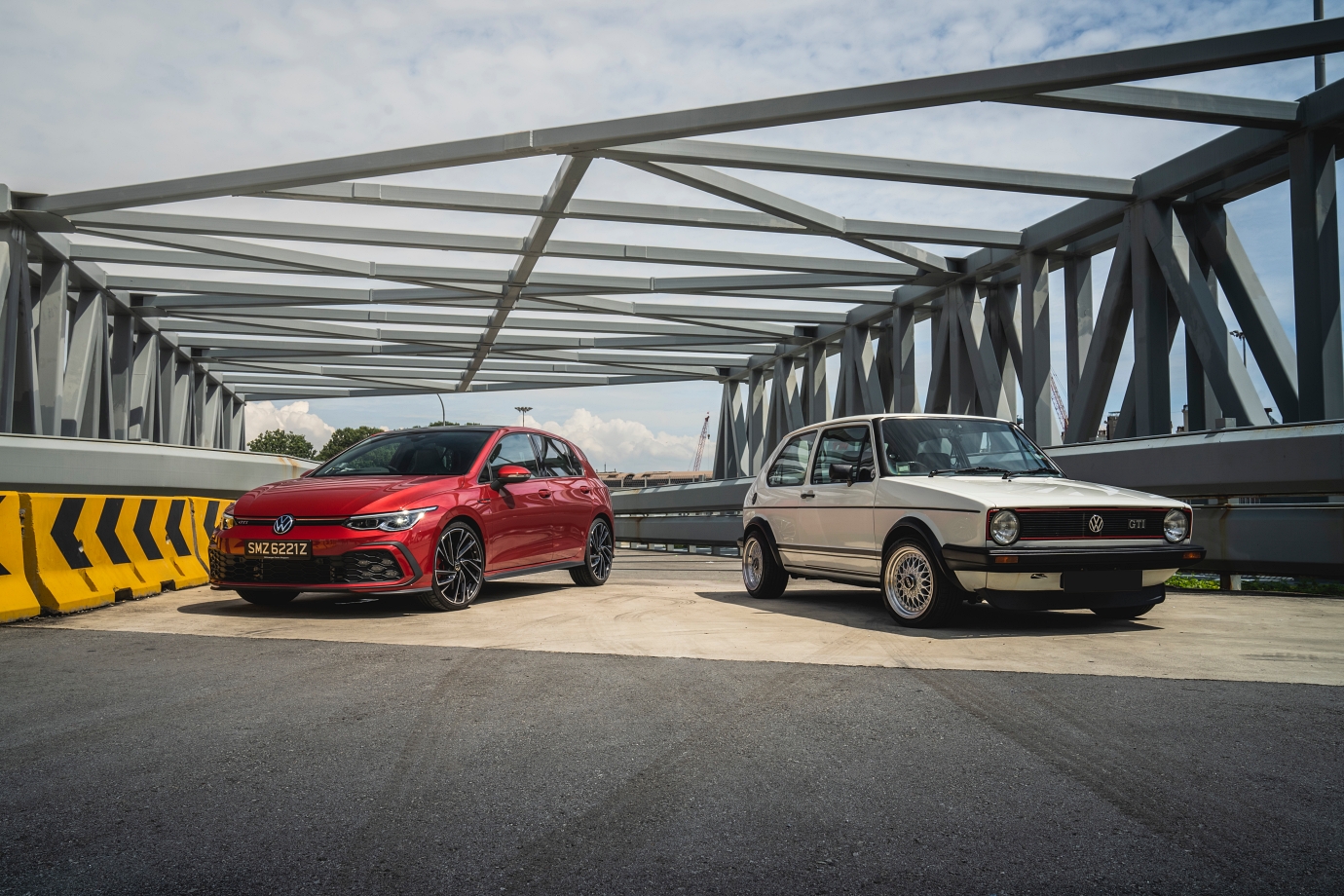

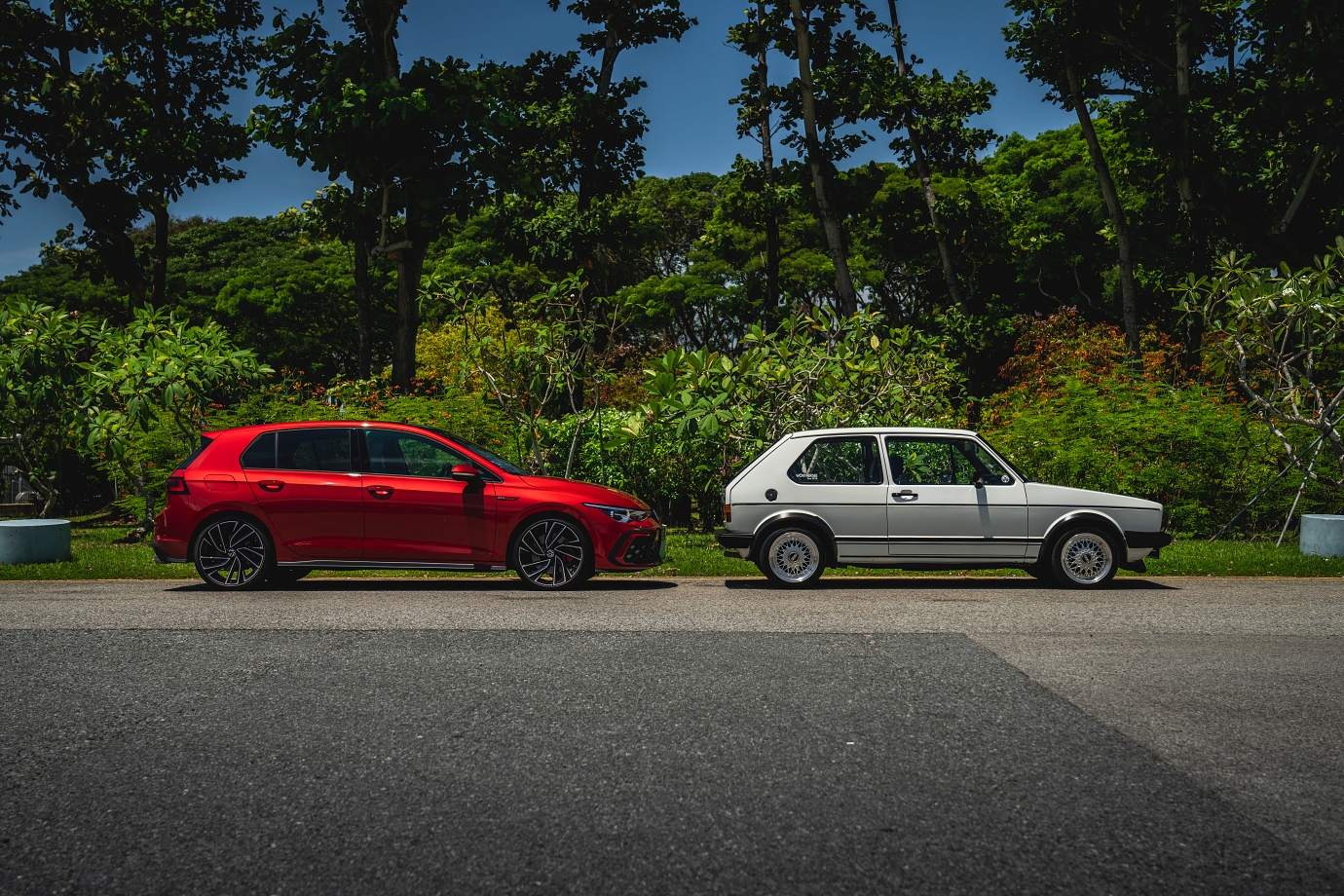
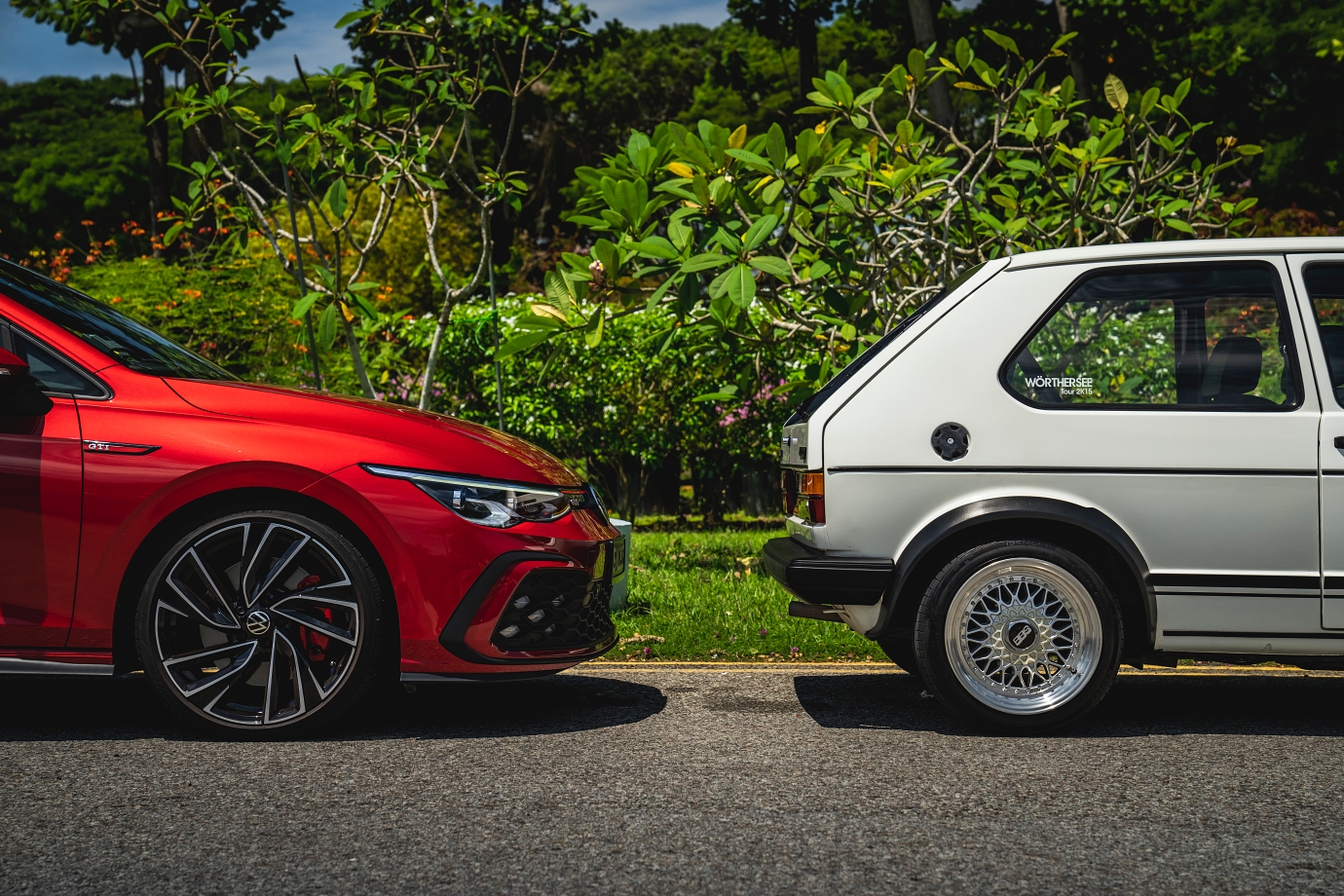
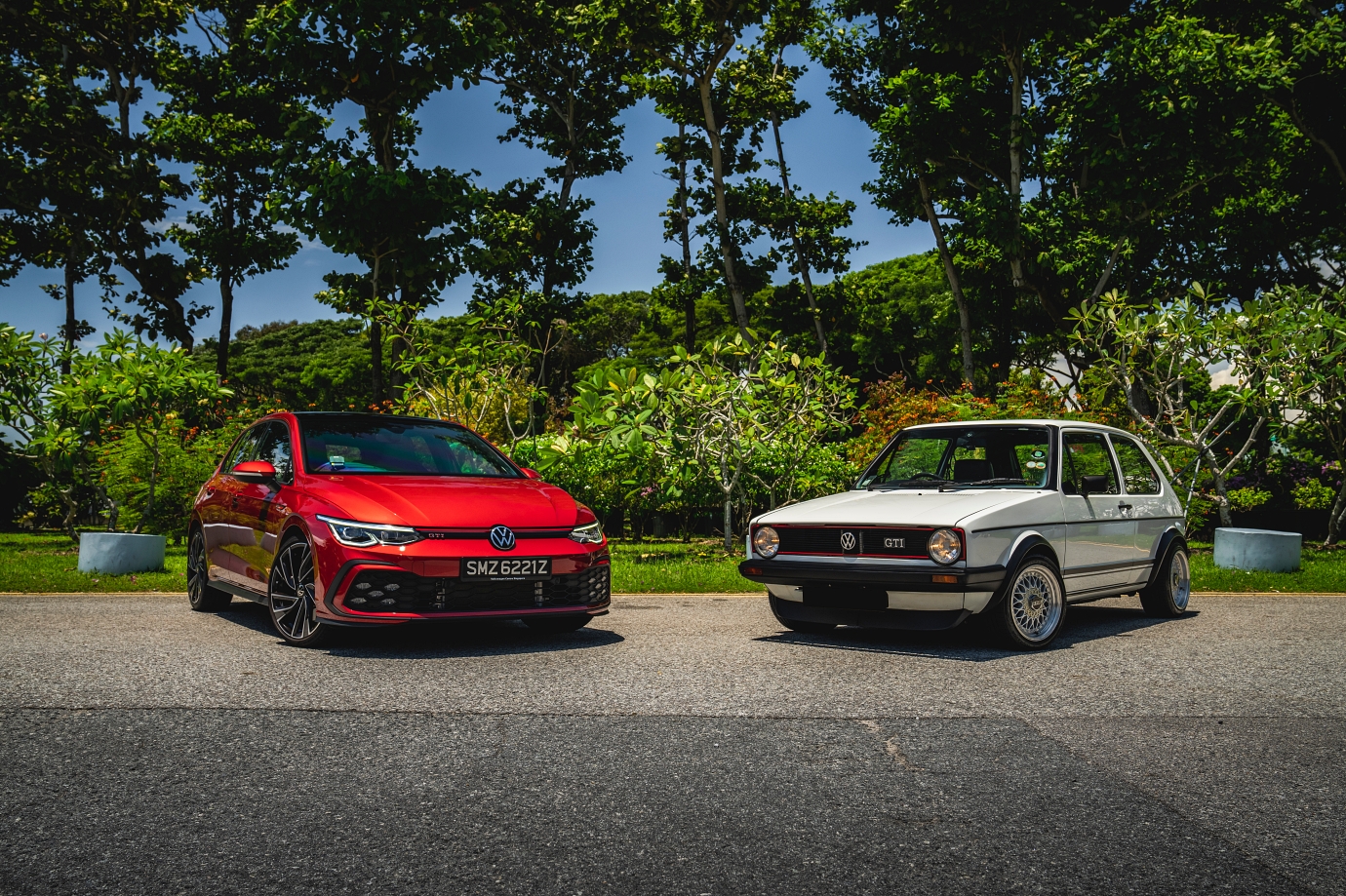
Volkswagen Mk8 Golf GTI 2021 & 1981 Mk1 Golf GTI Drive Review : Hatch Fun
Singapore - ‘GTI’. If you’re like us and grew up during the golden era of hot-hatches from the 1980s to the 1990s, there’s no way the three letters won’t mean anything to you.
Even younger car enthusiasts see some significance in the ‘GTI’ moniker. They might not even have grown up with the original, but there’s so much allure built-up around the ‘Golf GTI’ name it’s regarded as acceptably ‘hype’ and lit enough to be trending.
The Mk1 Golf GTI may not have been the first hot-hatch, but it defined the concept of rowdy ‘hot-hatchery’ and sealed its iconic status as one of the automotive greats in the process.
The eminently practical hatchback democratised driving performance for working class petrolheads by creating an agile and fun driving instrument that could nip at the heels of expensive sportscars on small, winding roads… something that hasn’t changed to this very day.
Like many great cars, the original Golf GTI was conceived as an after-hours skunkworks project by a passionate few engineers… with nary a focus group or committee in sight, we’re guessing.
The brief was simple: transform the Giugiaro-styled Golf hatchback into an engaging driving machine.
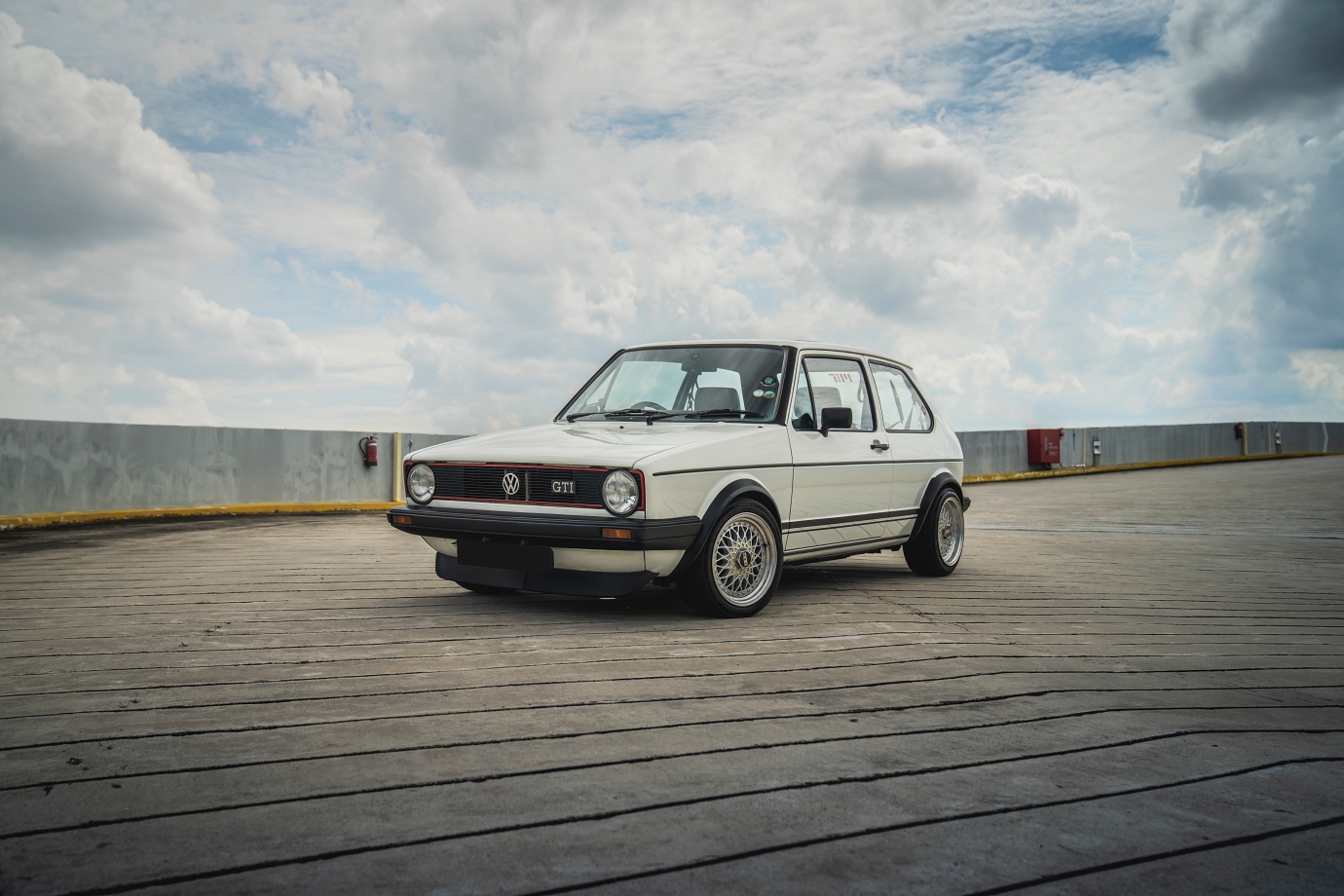
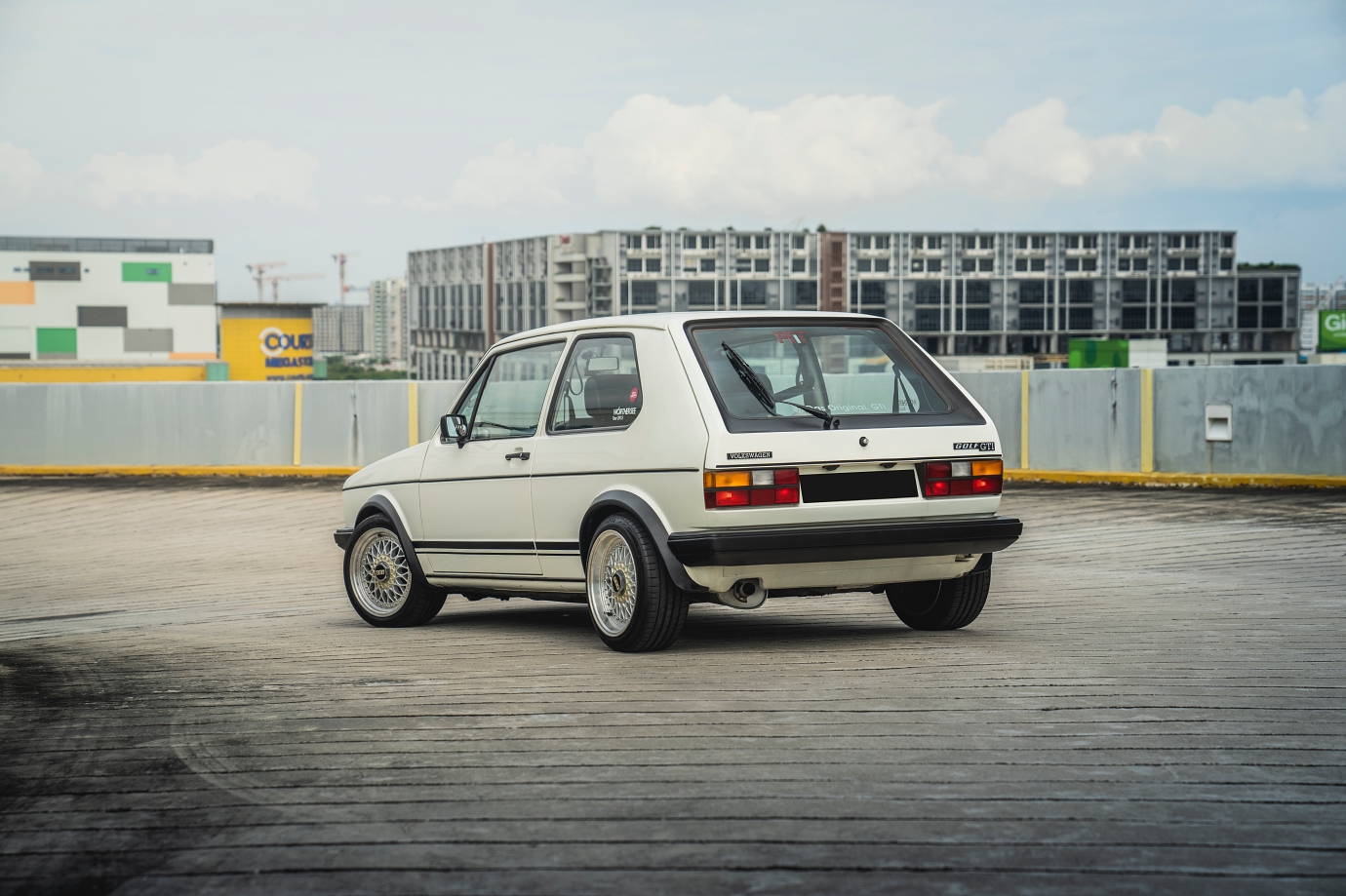
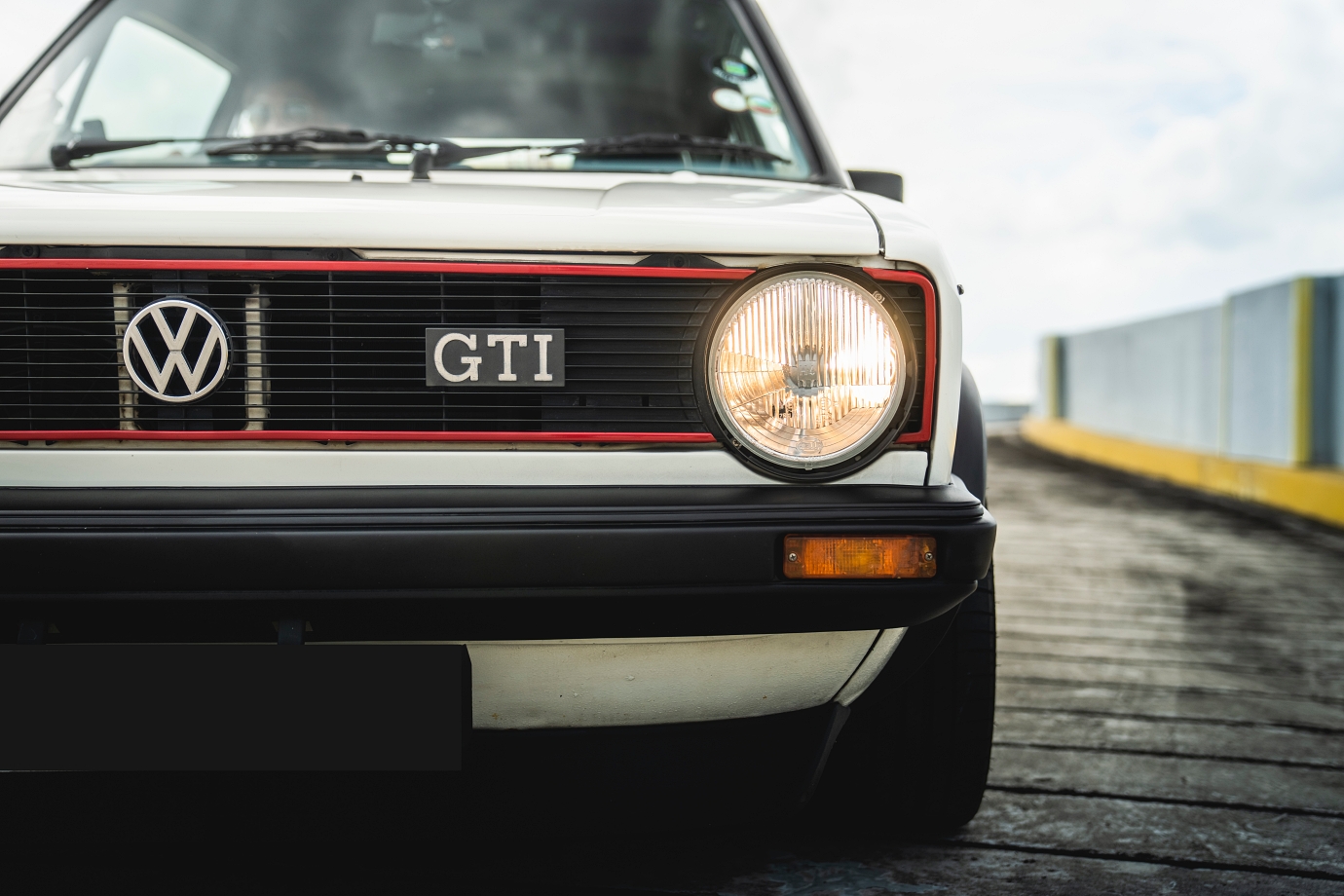
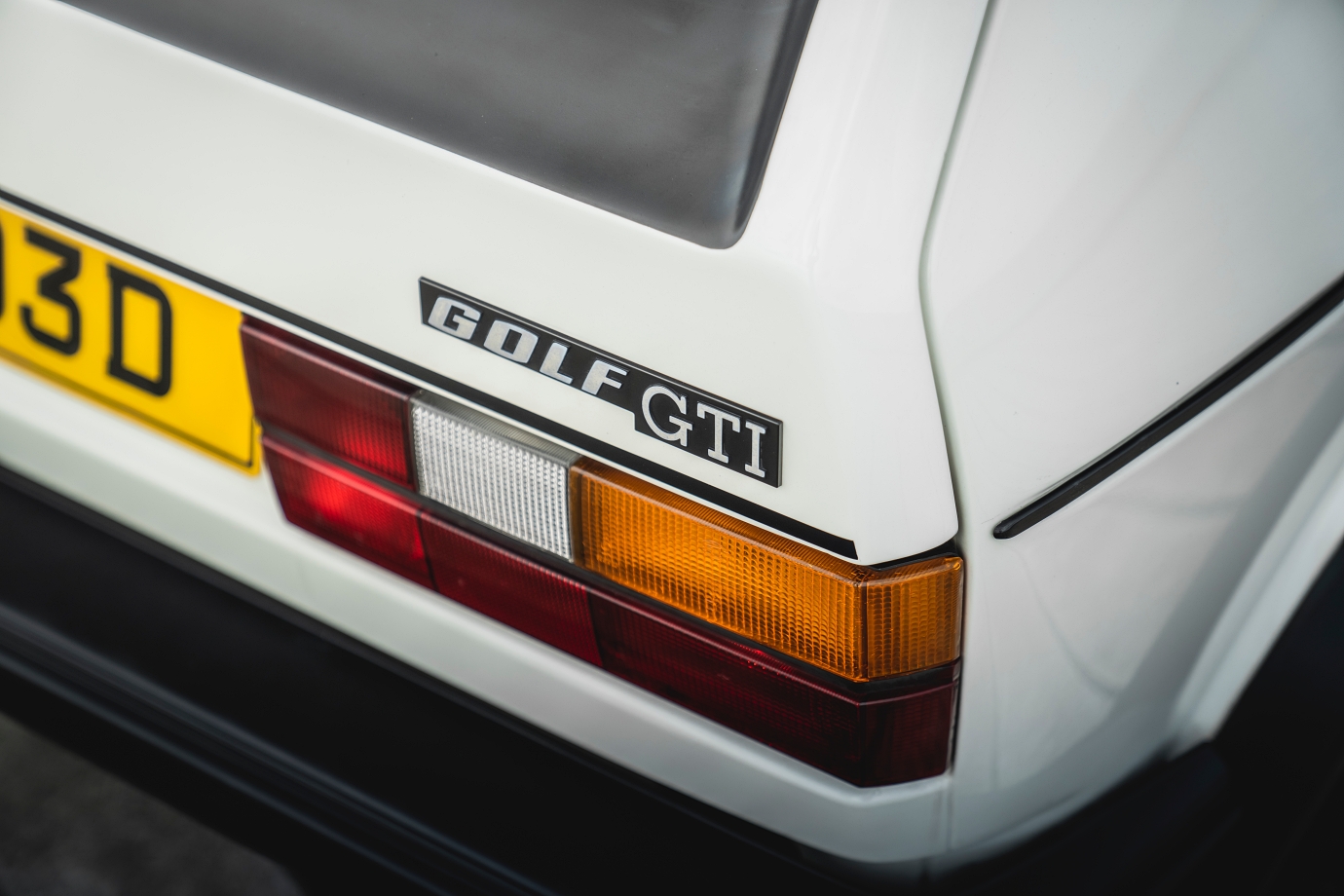
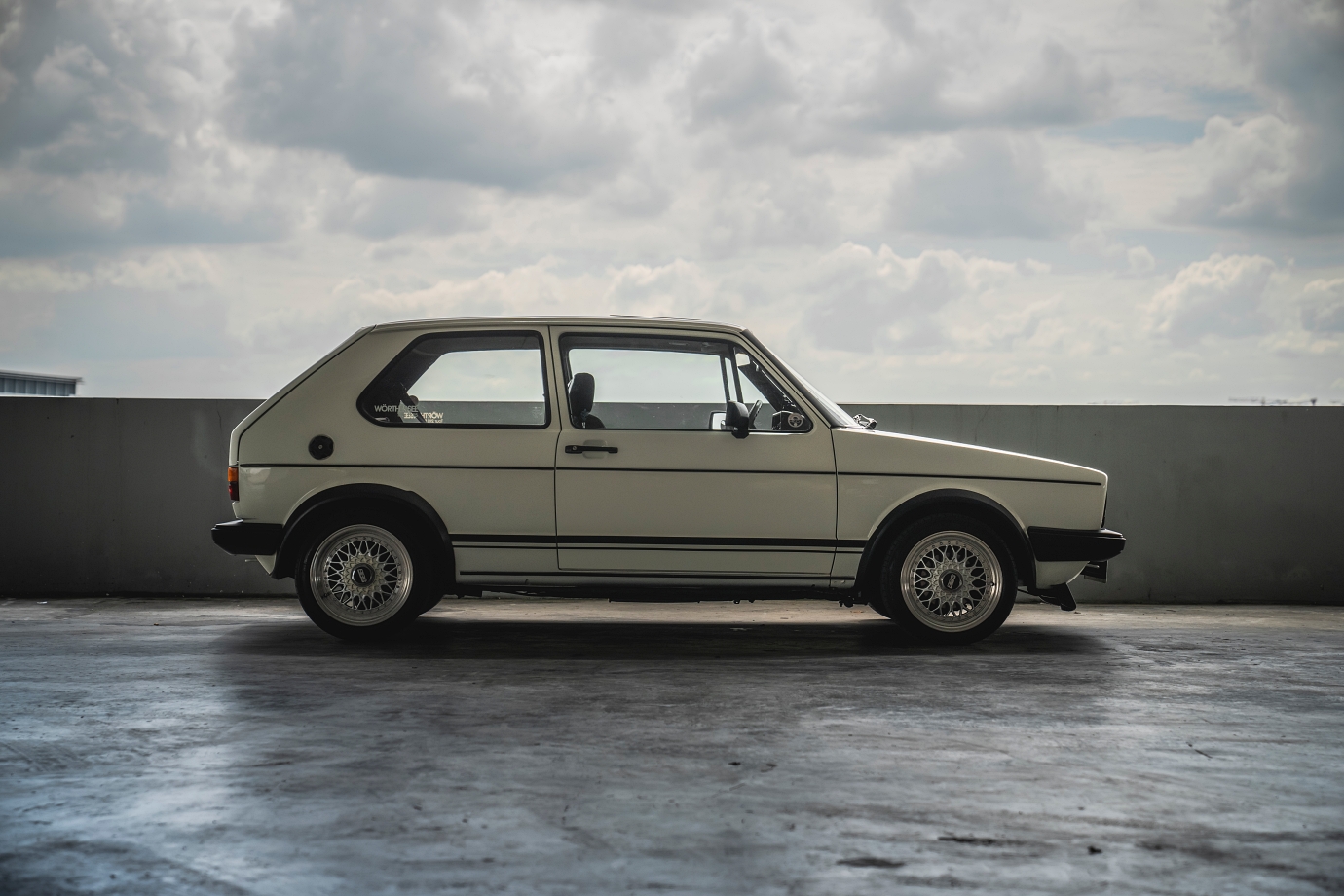
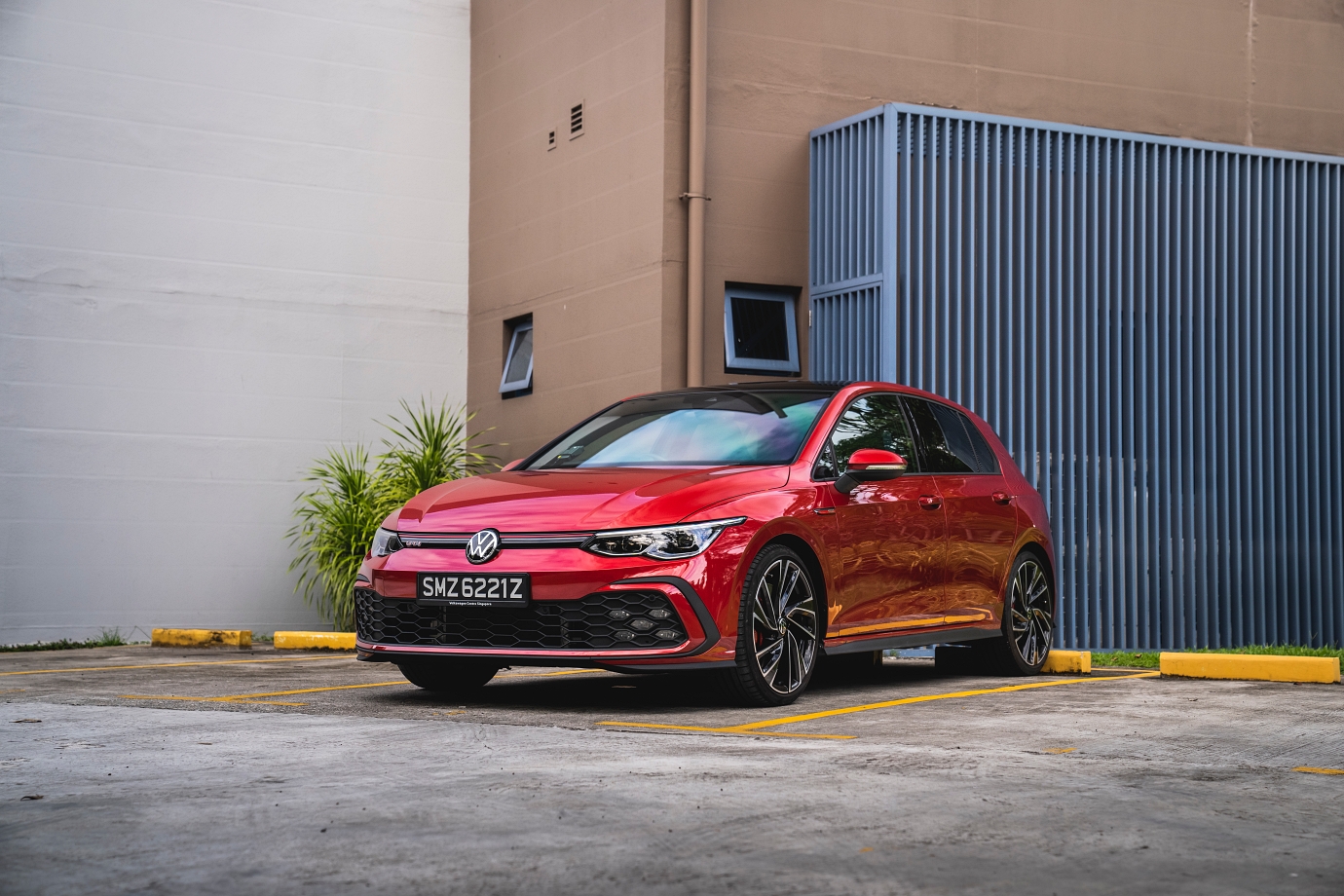
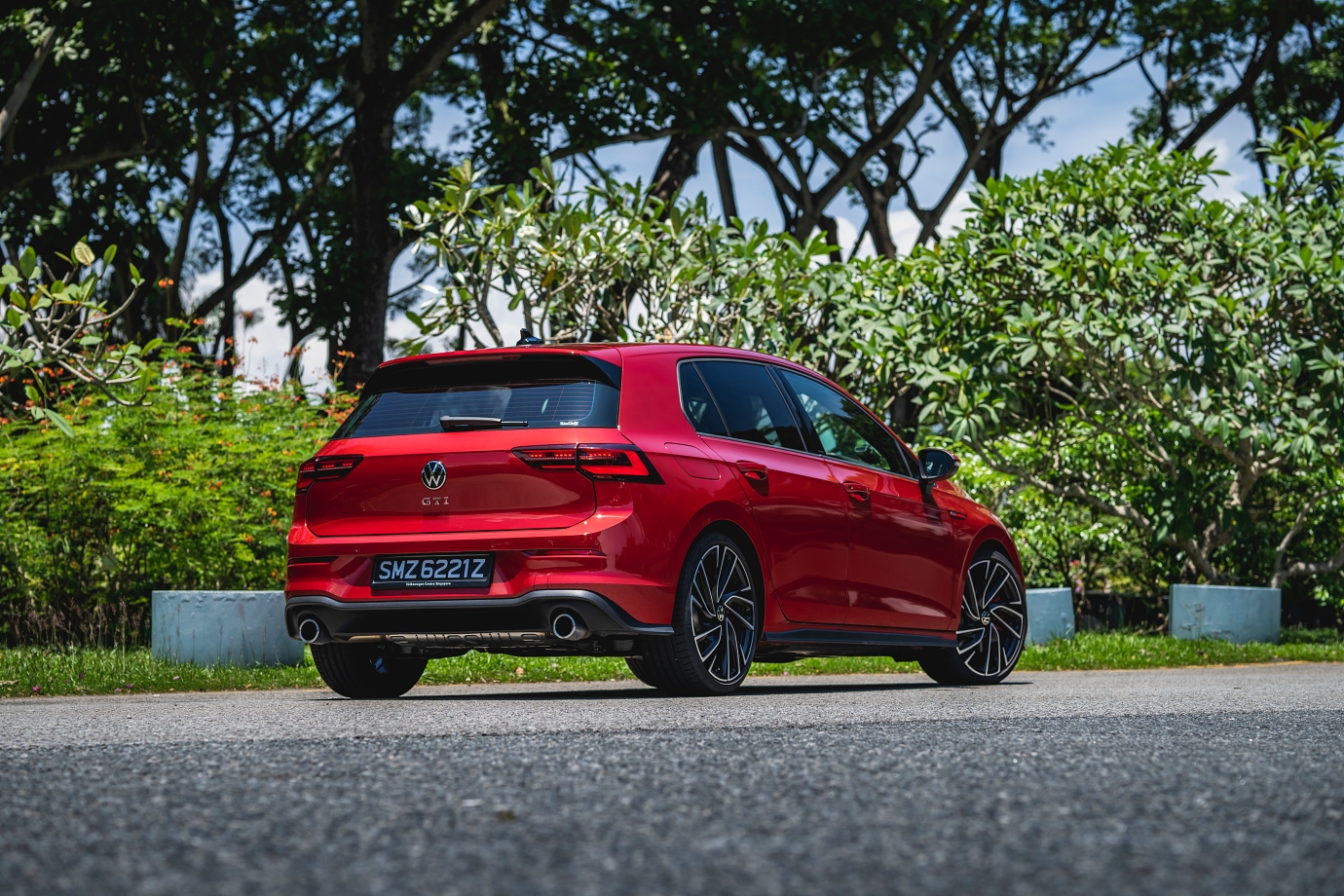
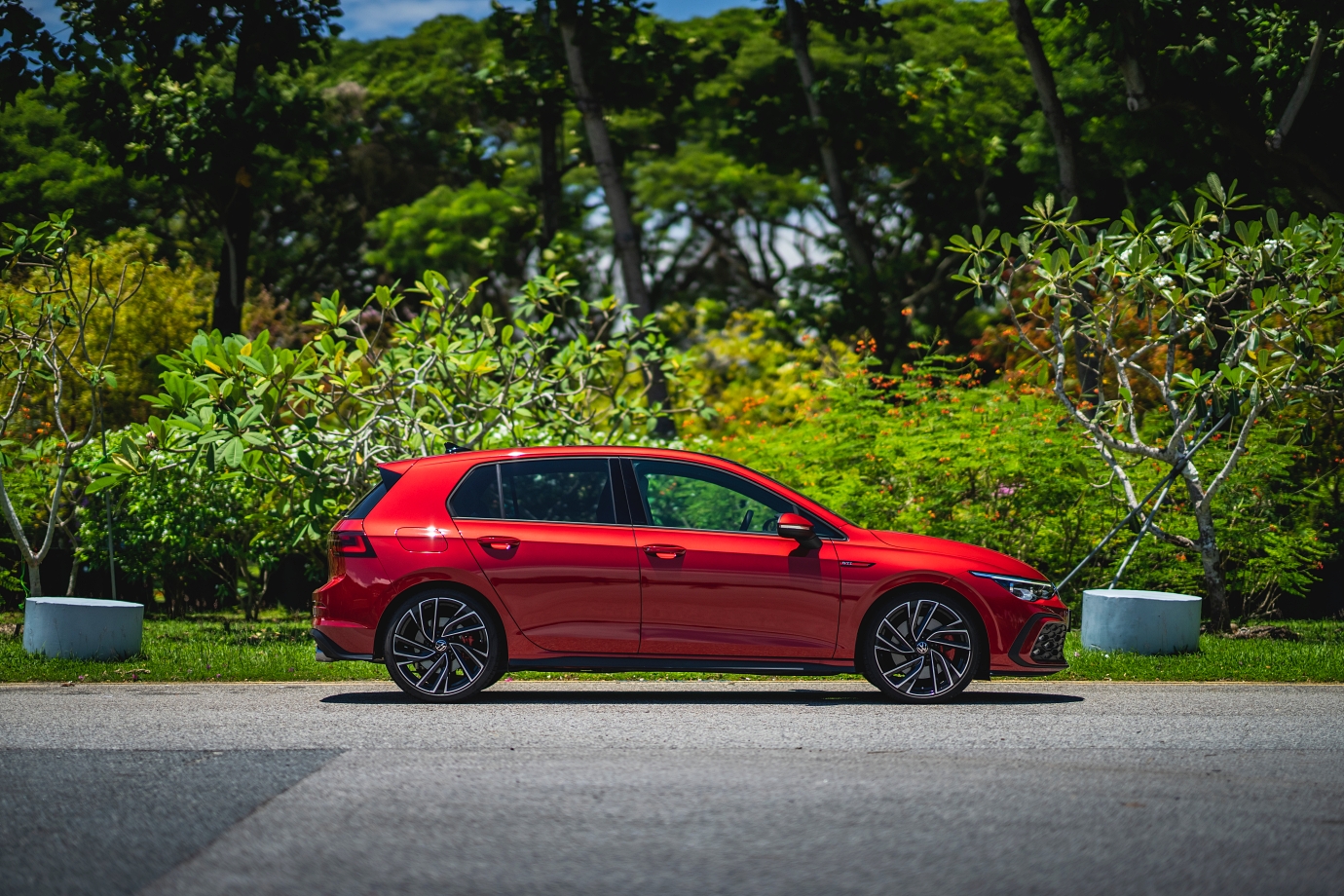
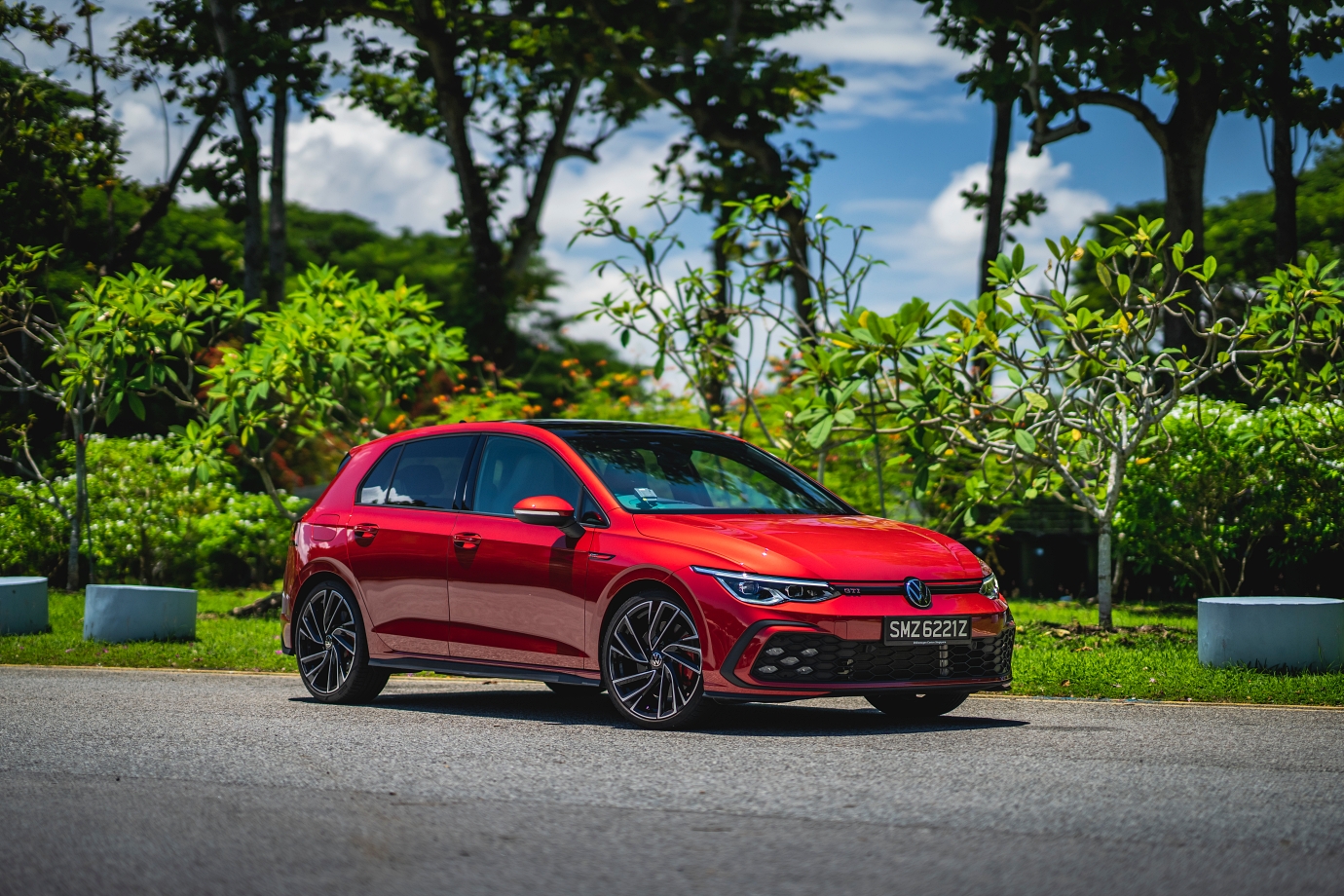
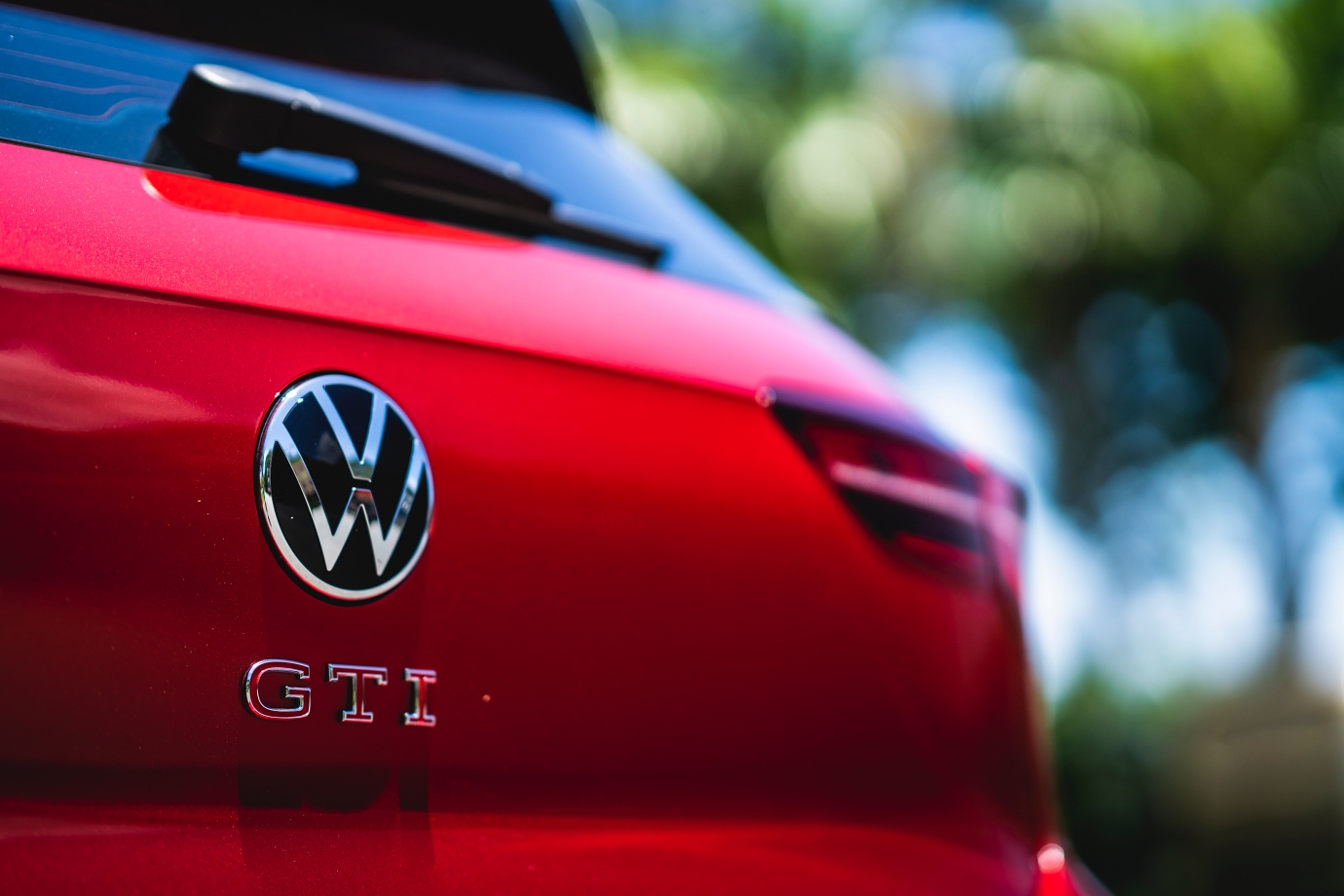
The result that broke cover in 1975 was a lightweight (800+kg kerbweight), front-drive 3dr hatchback powered by a 1.6-litre with mechanical fuel-injection (GTI for Grand Touring Injection), which produced a perky 110hp/140Nm and could touch 180+km/h.
Some of the key exterior aesthetic touches to differentiate the very first GTI from the regular Golf models have become trademark GTI elements eight generations on.
The distinctive red frame around the Mk1’s radiator grille has endured through the years and on the Mk8, this has evolved into a horizontal slash across the bonnet line and spans left to right headlight and extends into the front flanks.
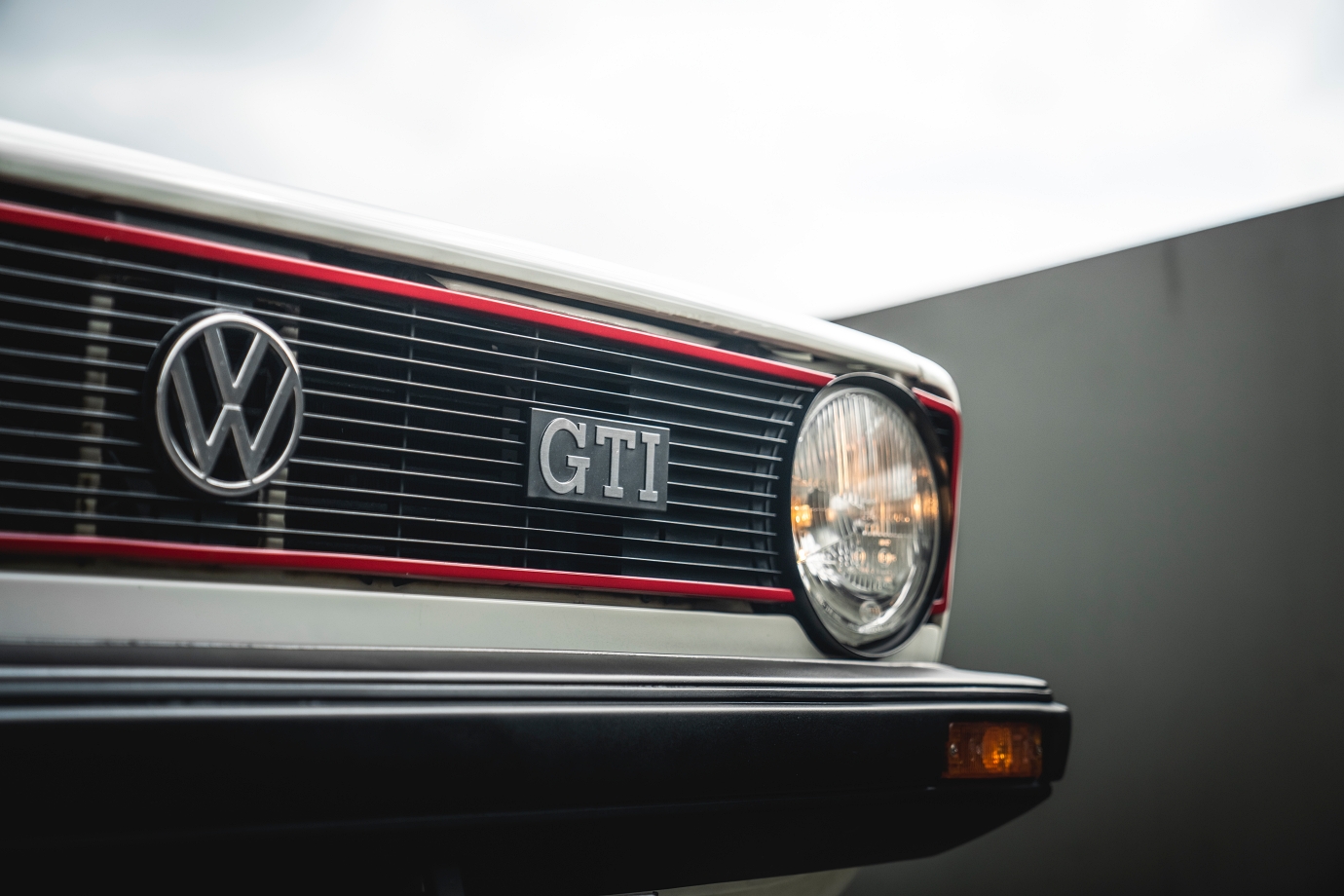
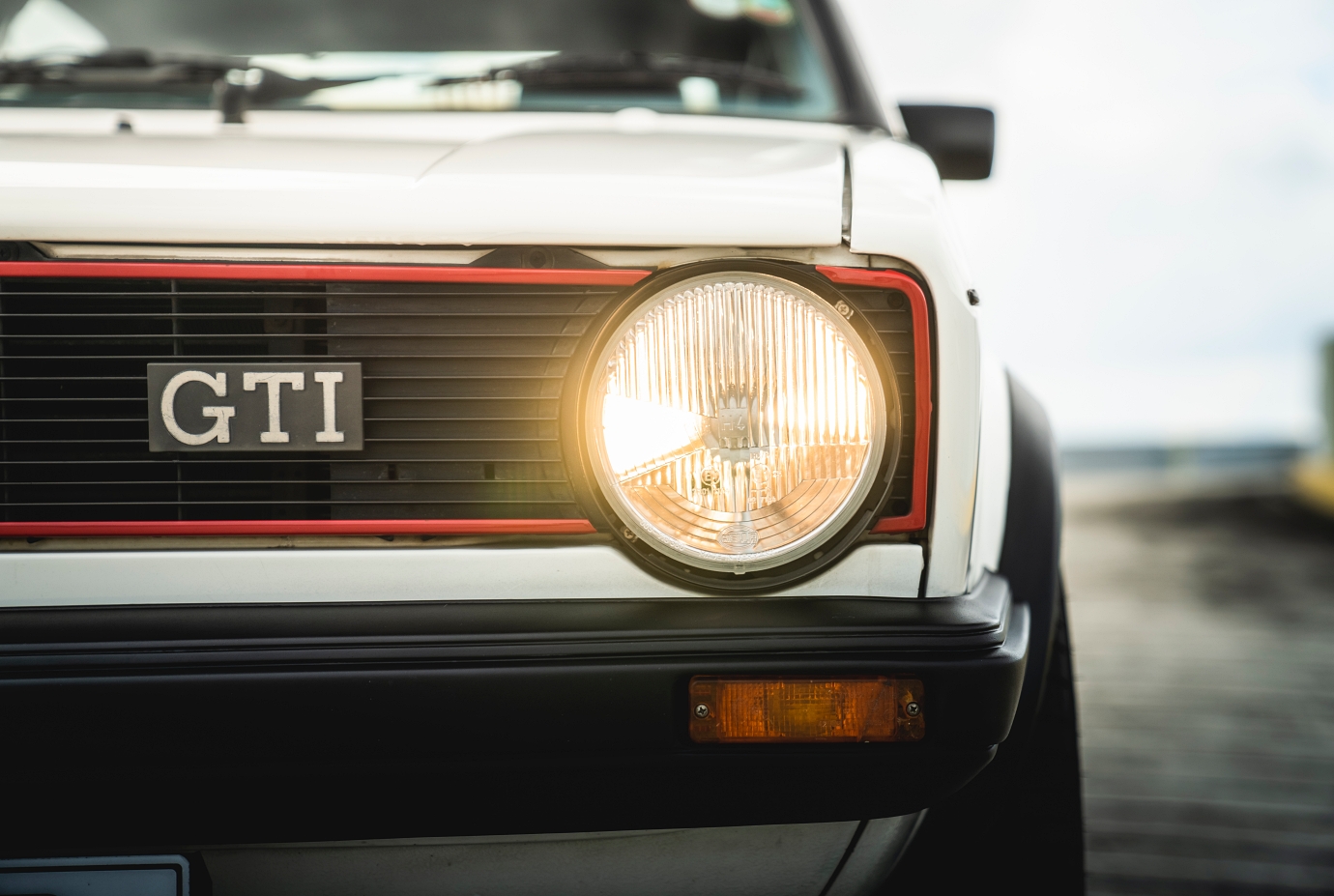
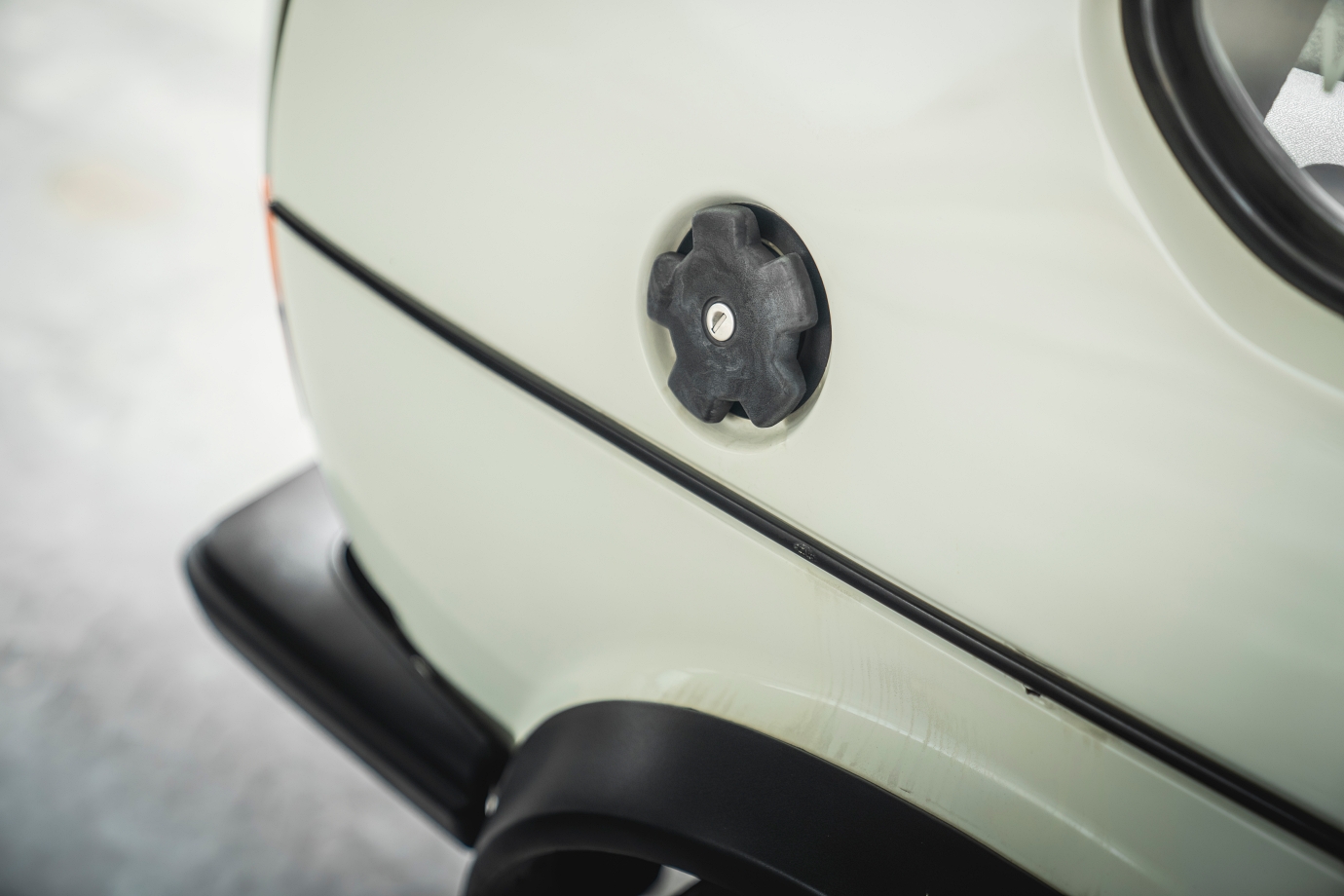
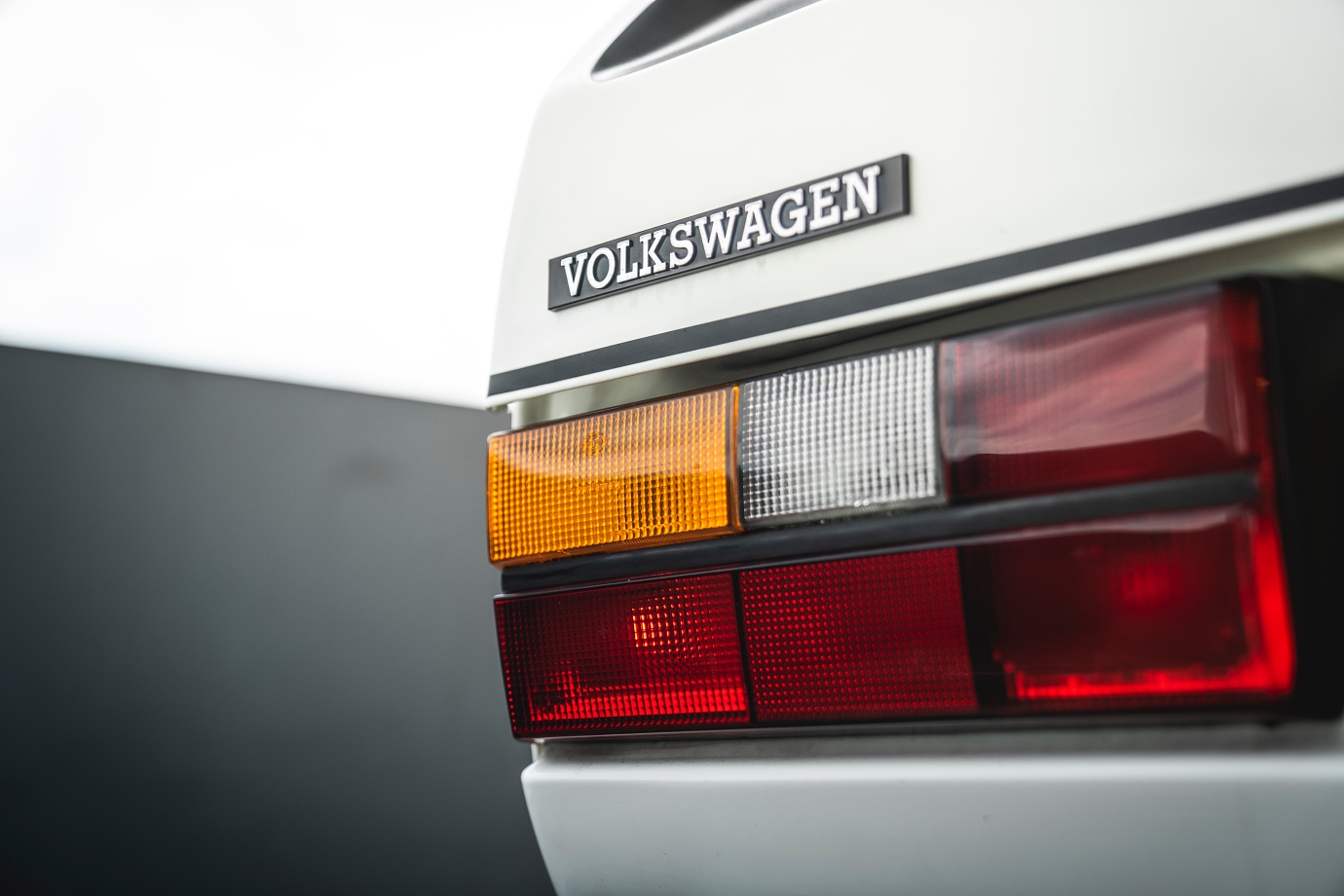
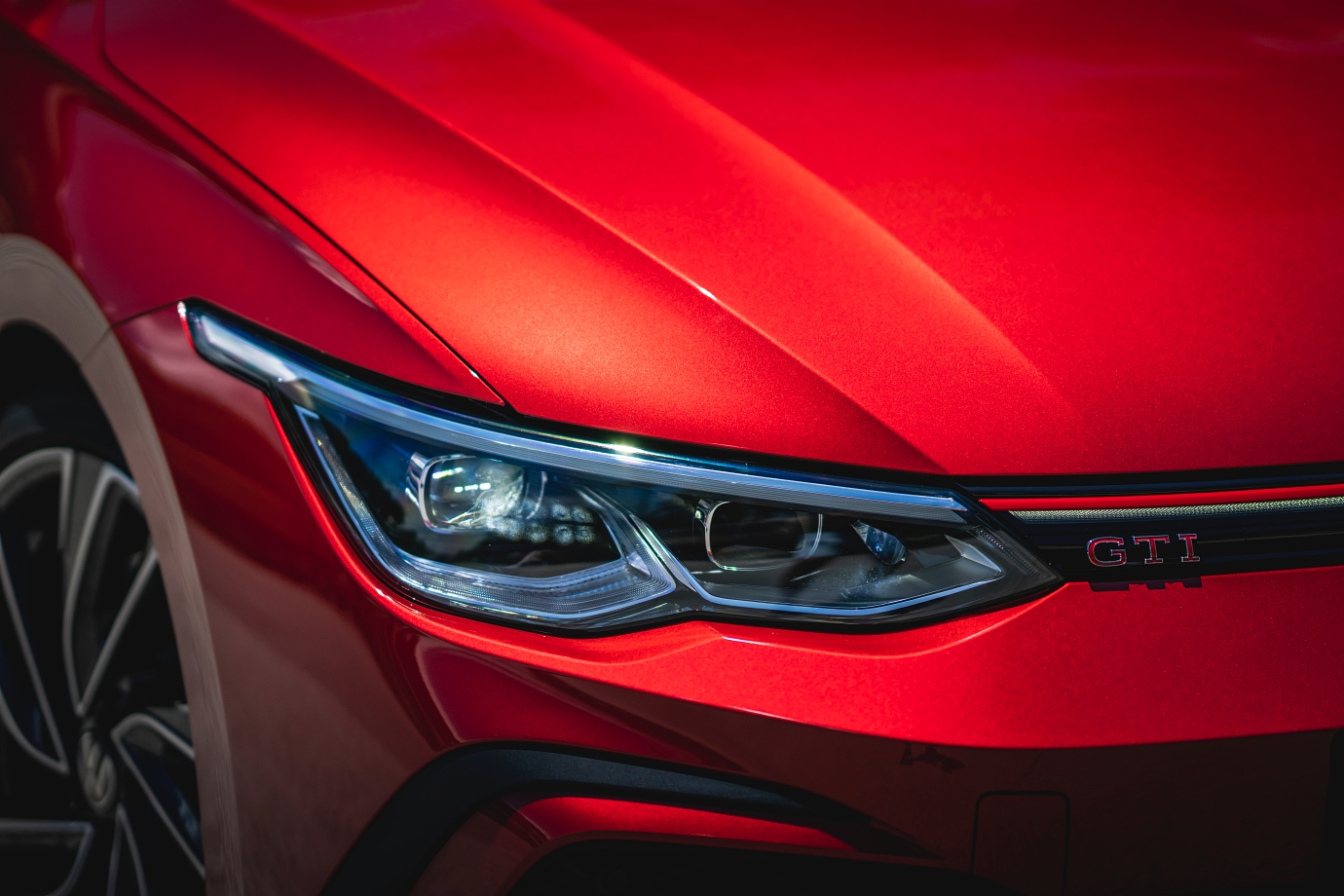
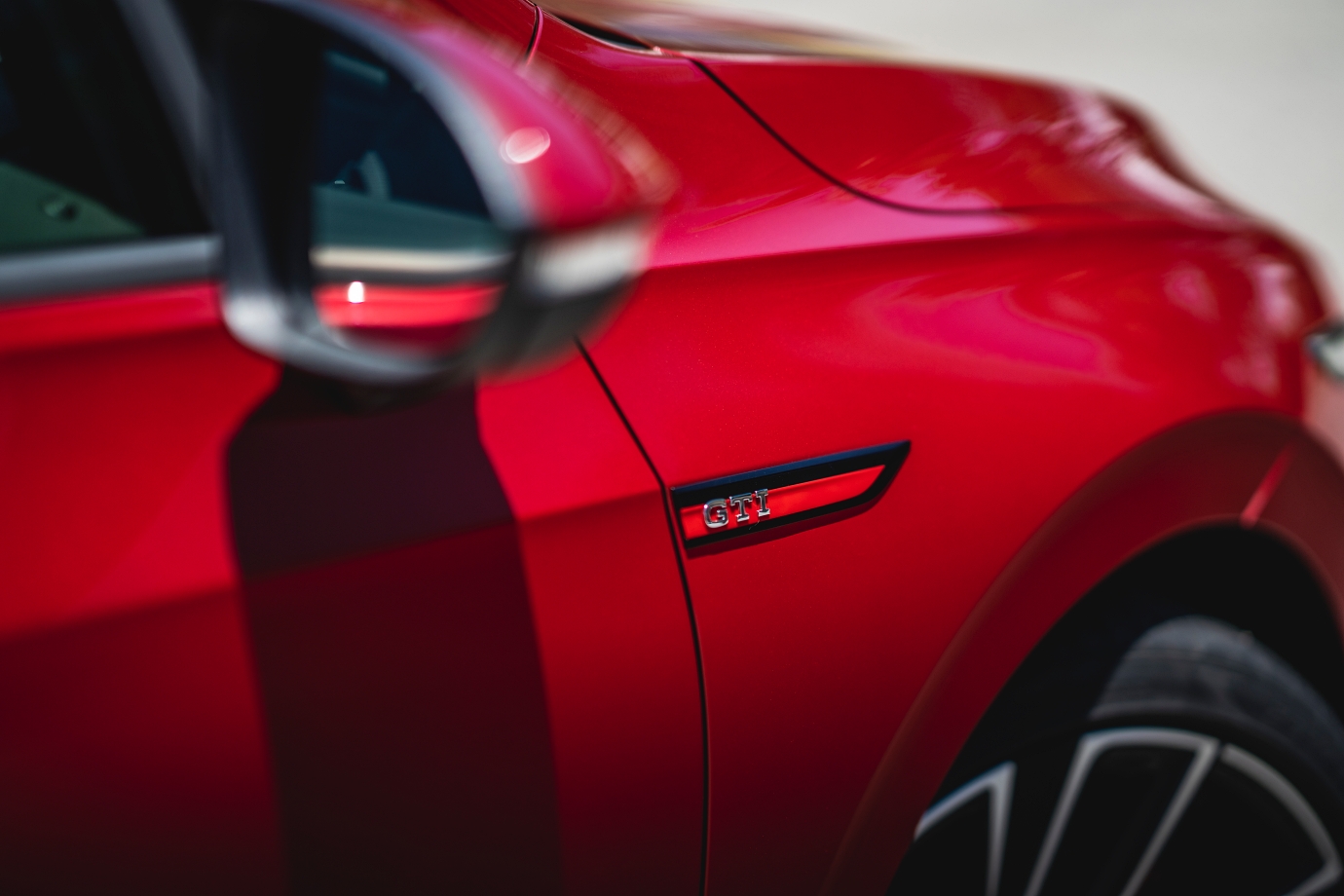
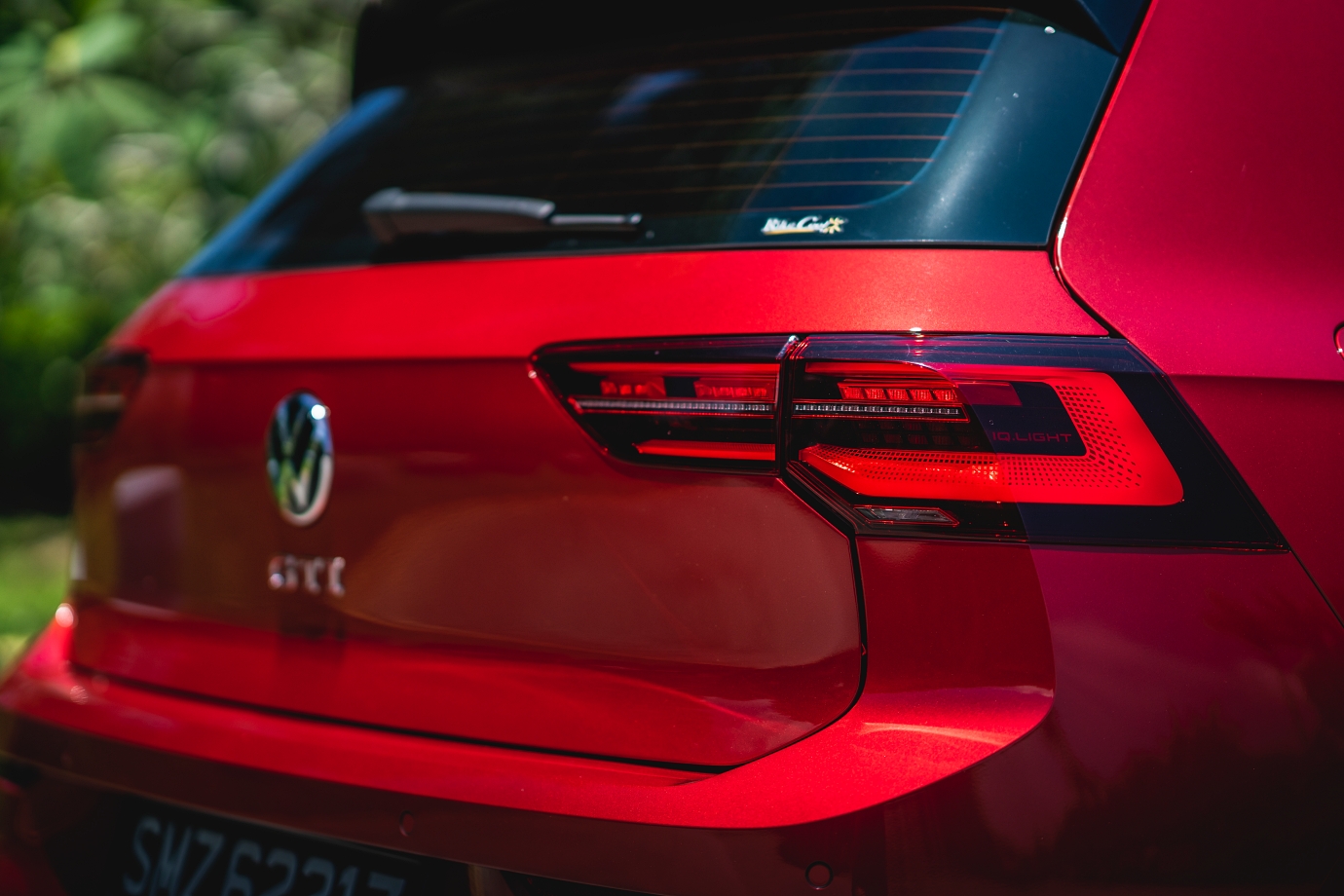
With a sporty body-kit that includes GTI-specific front/rear diffusers, a roof spoiler and honeycomb grille, the Mk8 GTI has evolved beyond the simple wheel-arch extensions and big chin spoiler of the original.
While the Mk8 has grown in size over the Mk1, the clean purity to its aesthetics is a nice contrast to the GTI’s overly aggro-looking contemporaries.
The fact that its drag coefficient has dropped from 0.3 to 0.275 demonstrates there’s some function to its (clean) form.
VW even stakes its claim on ‘GTI’ fame with just the three letters designating the model on the rear hatch – that’s how powerful the nomenclature is in the street cred stakes when you recognise it as a Golf GTI without the word ‘Golf’ even appearing!
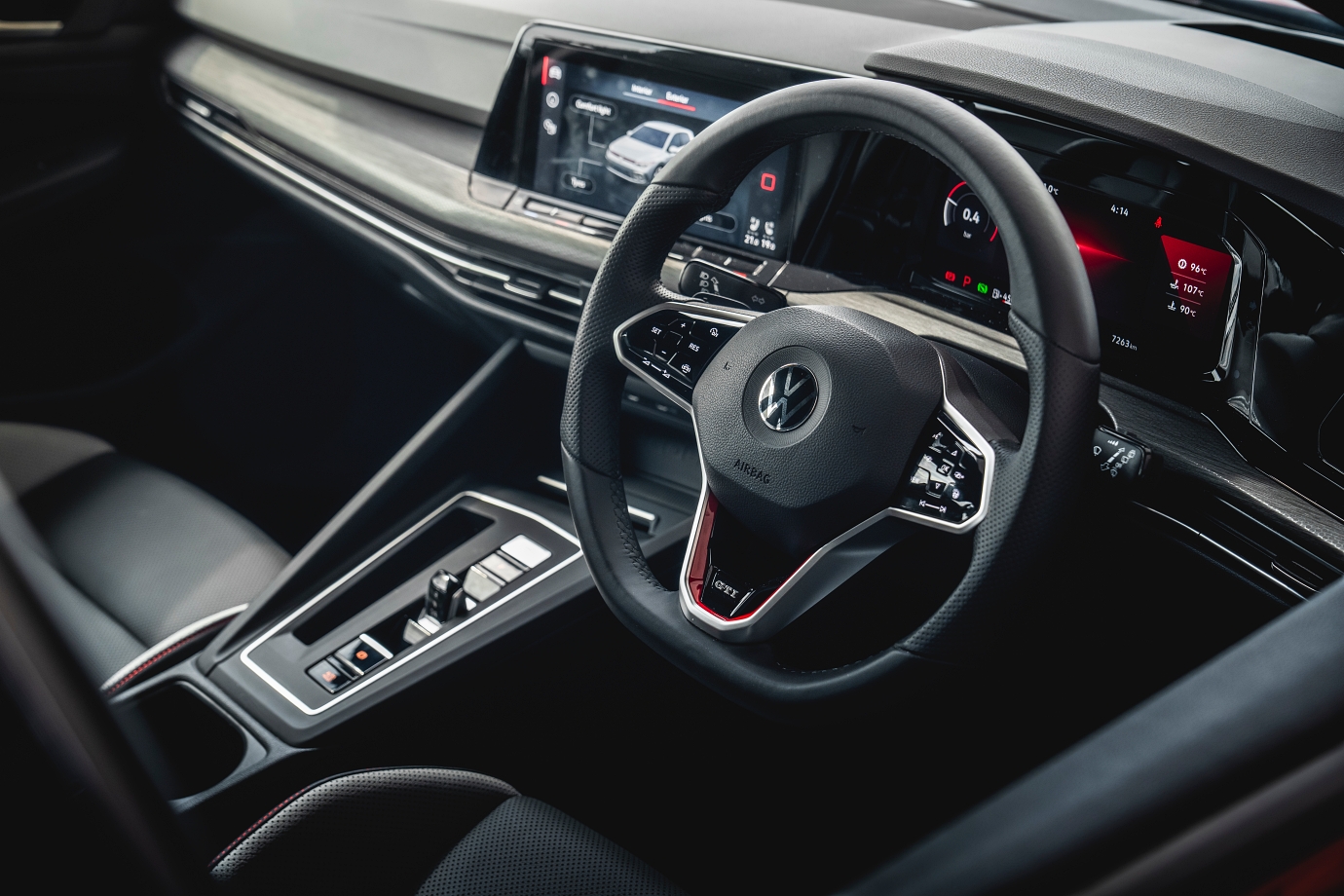
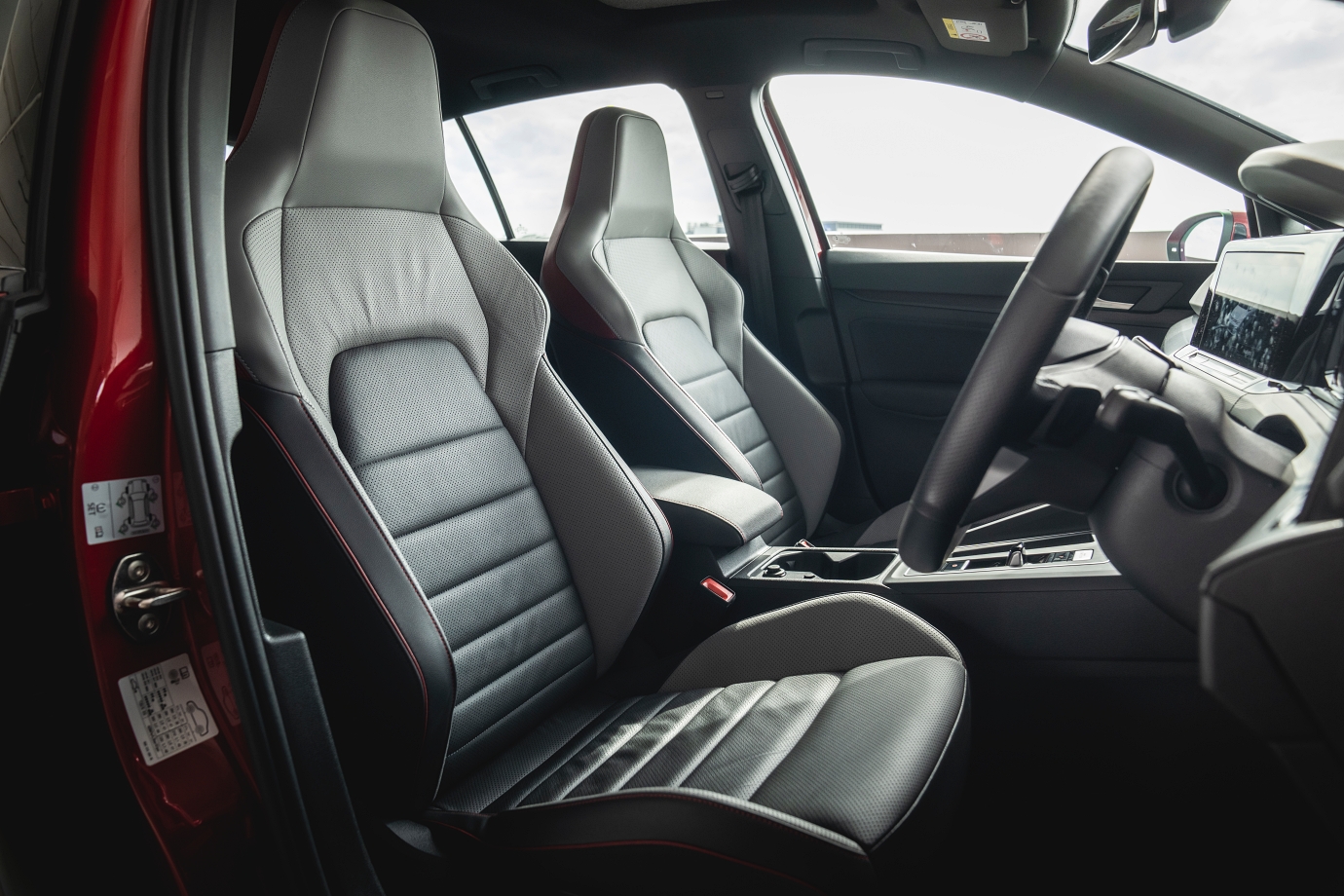
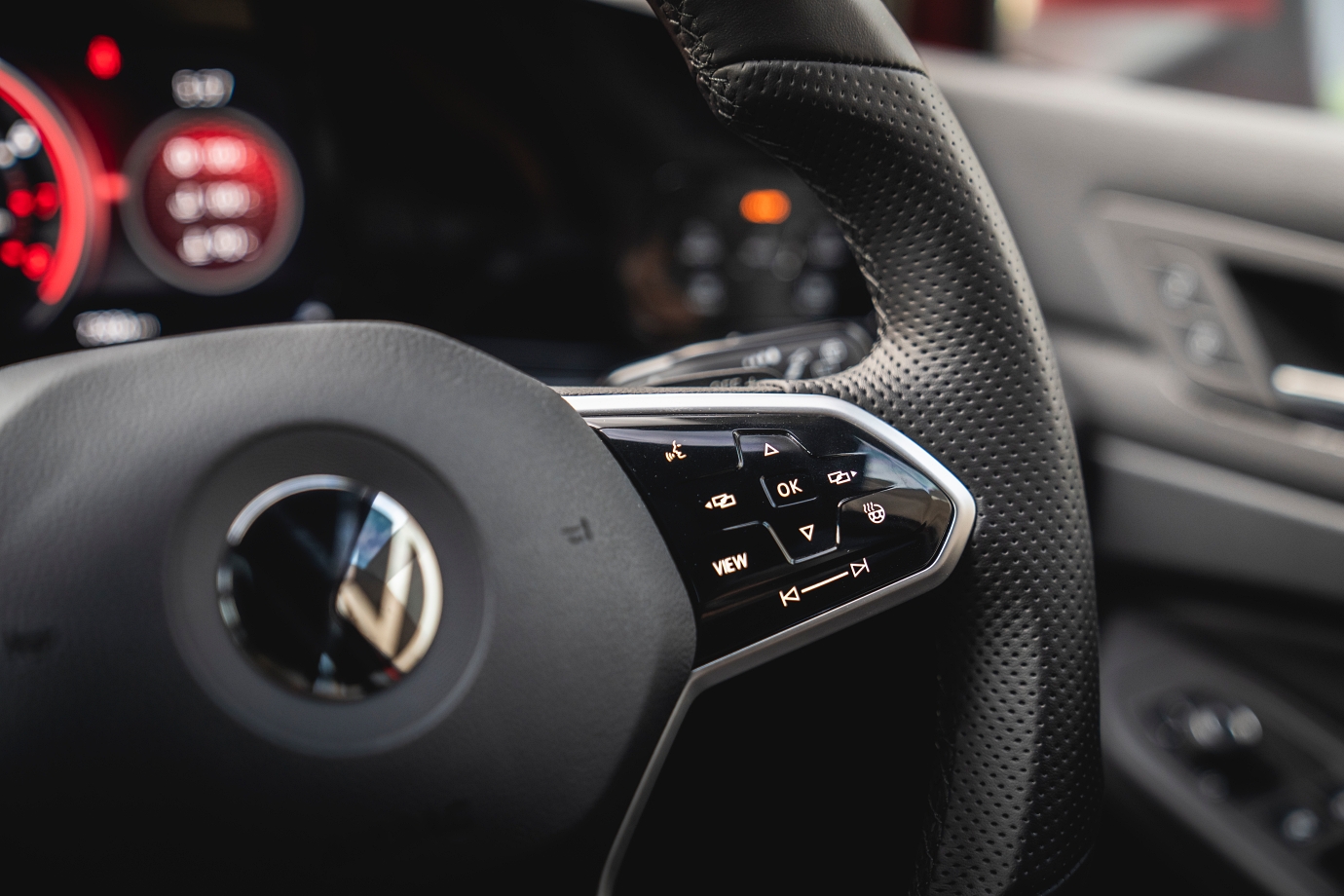
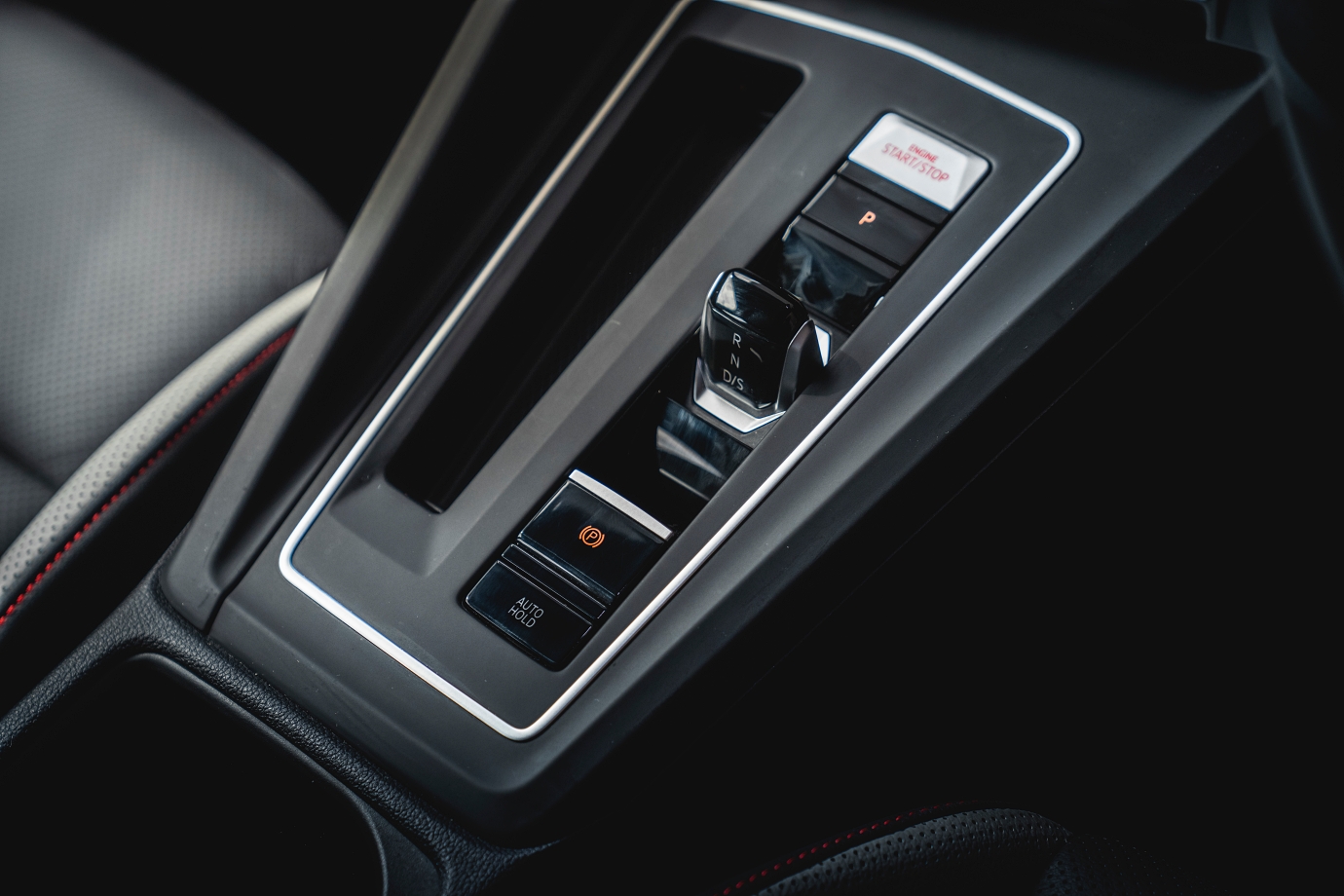
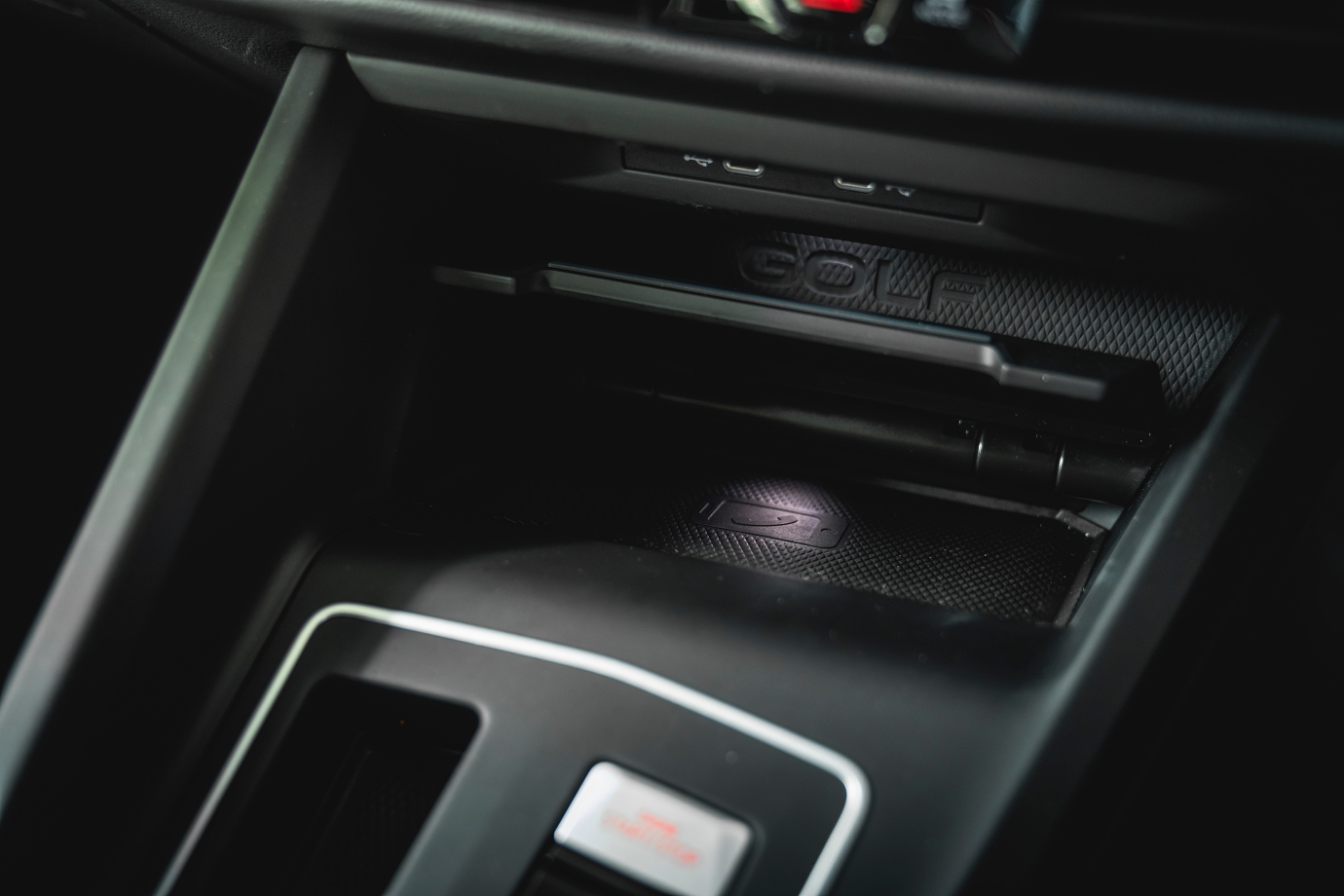
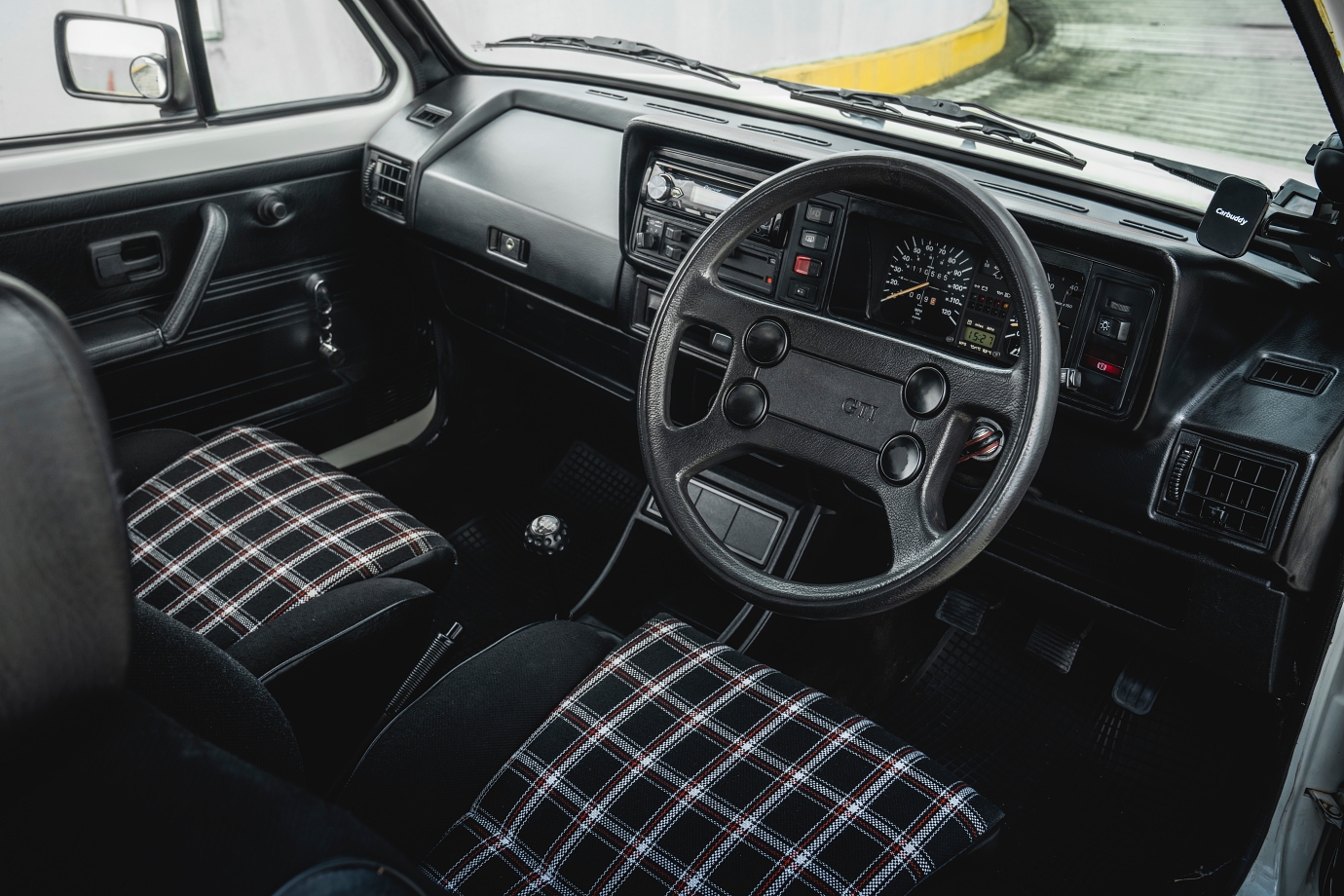
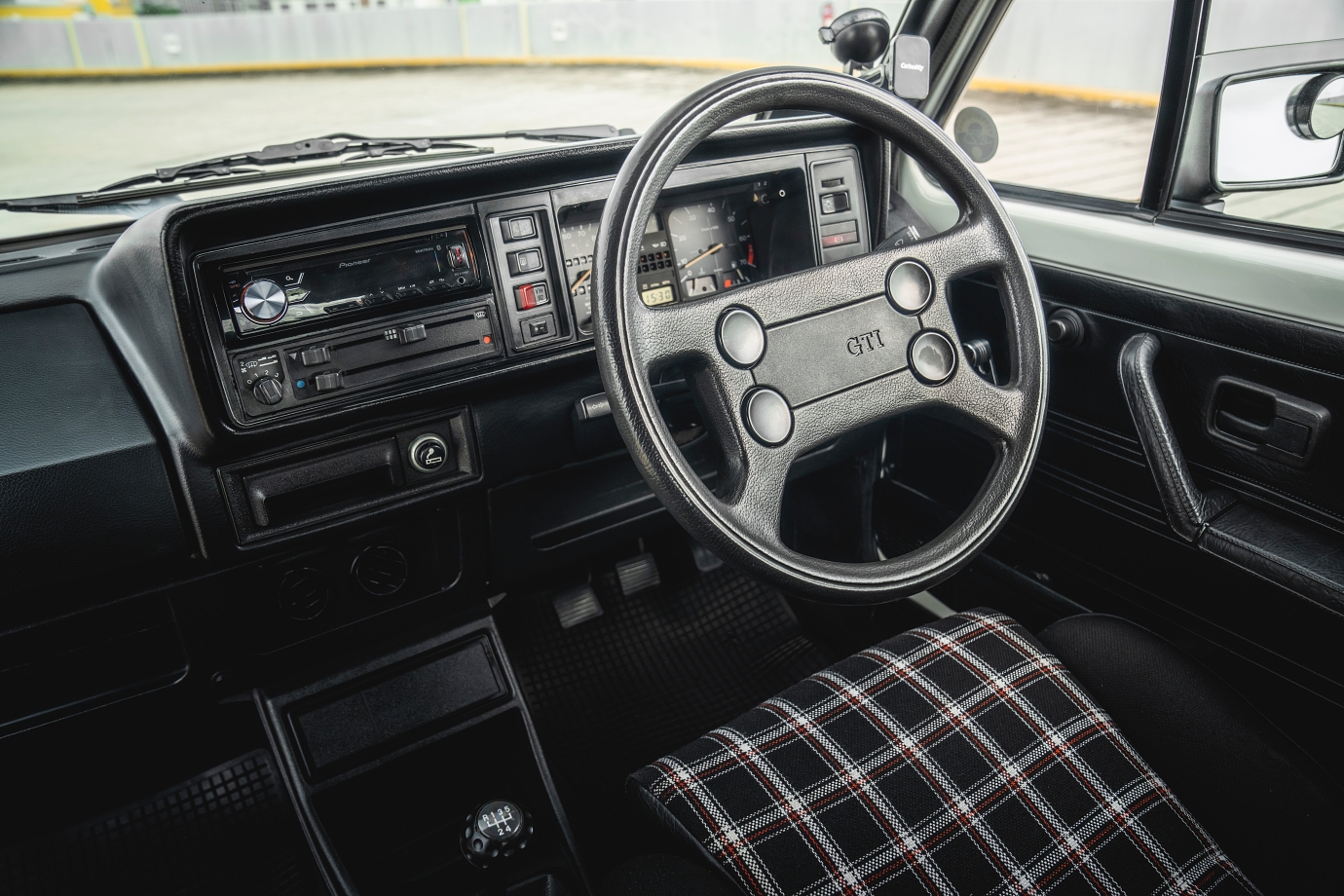
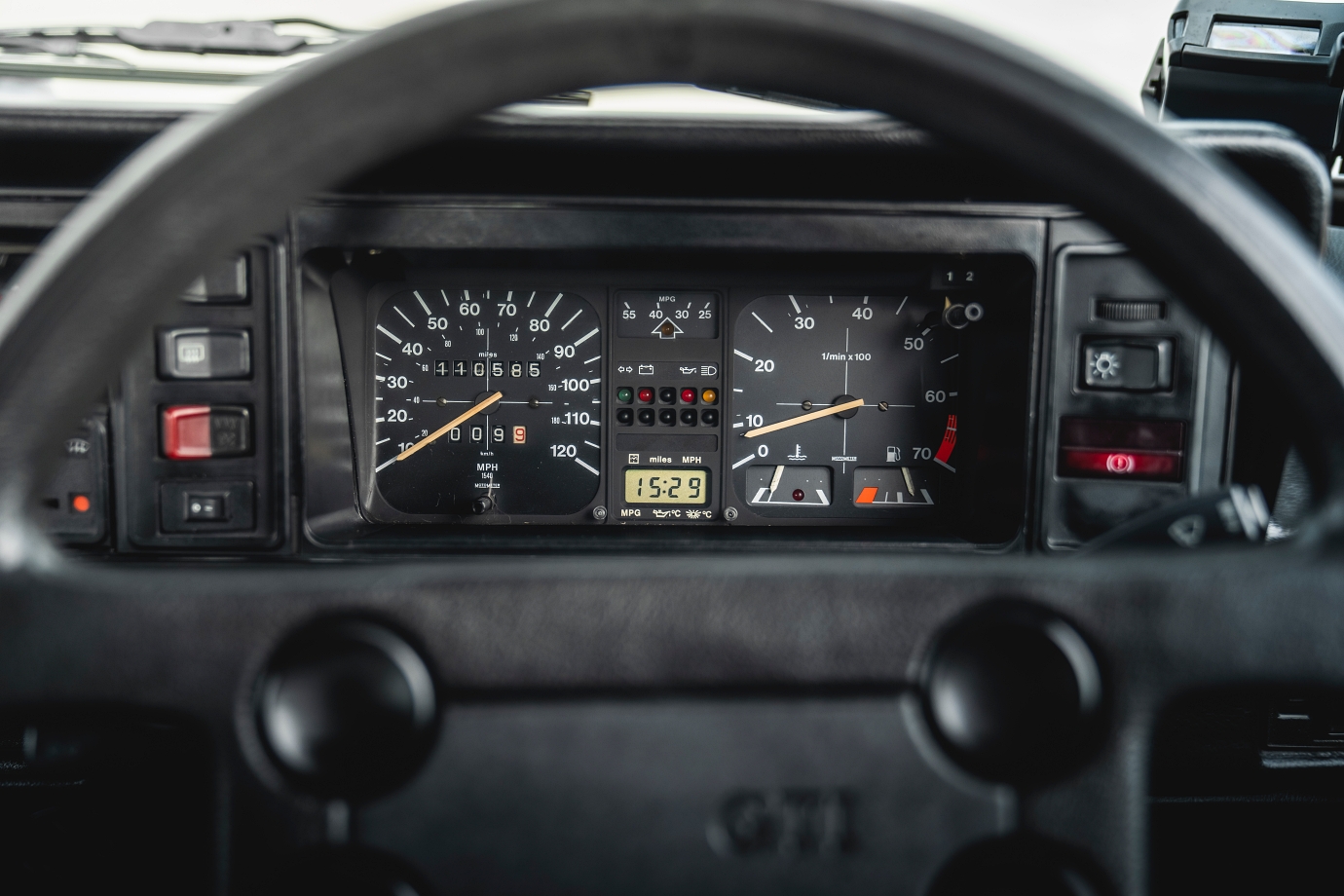
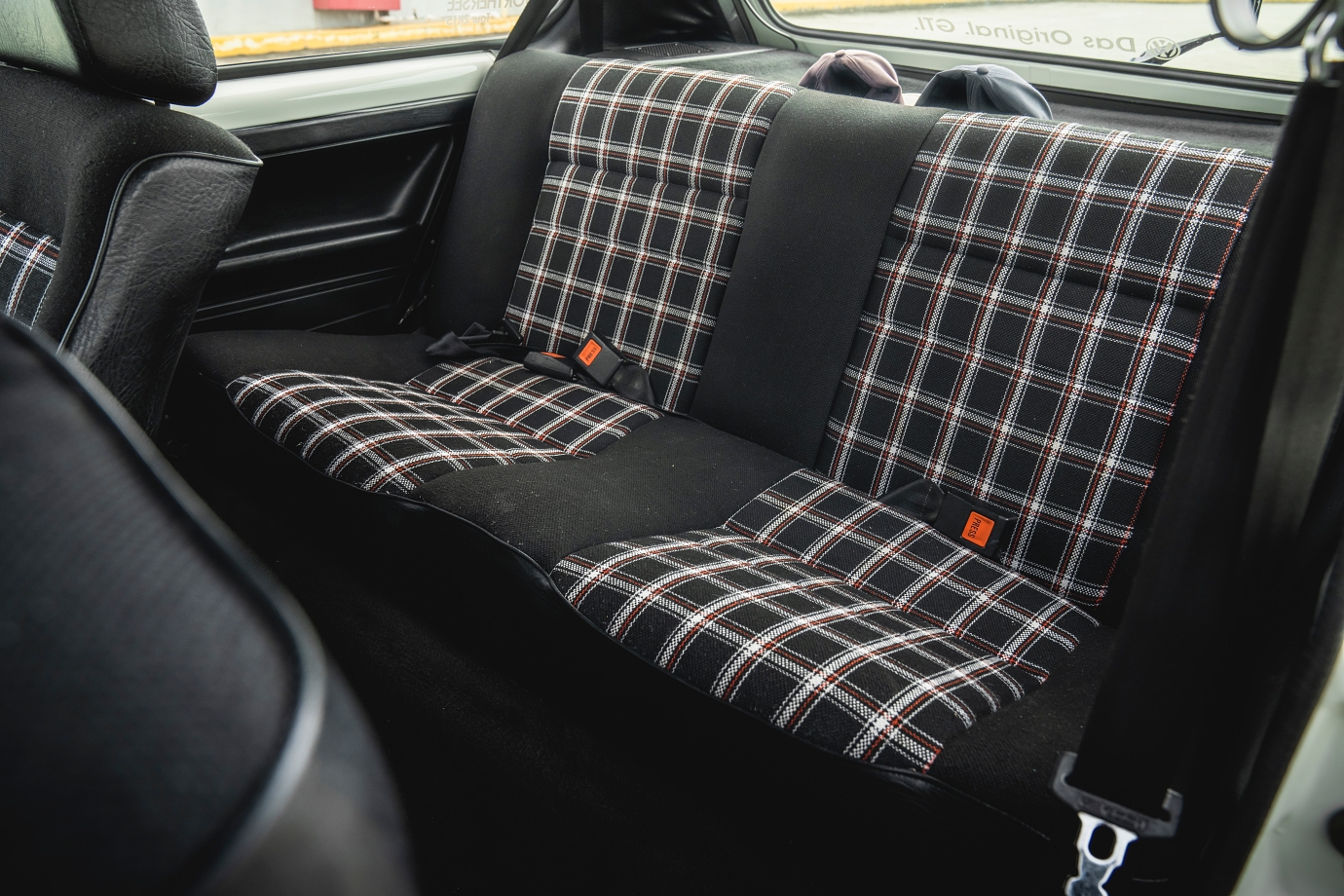
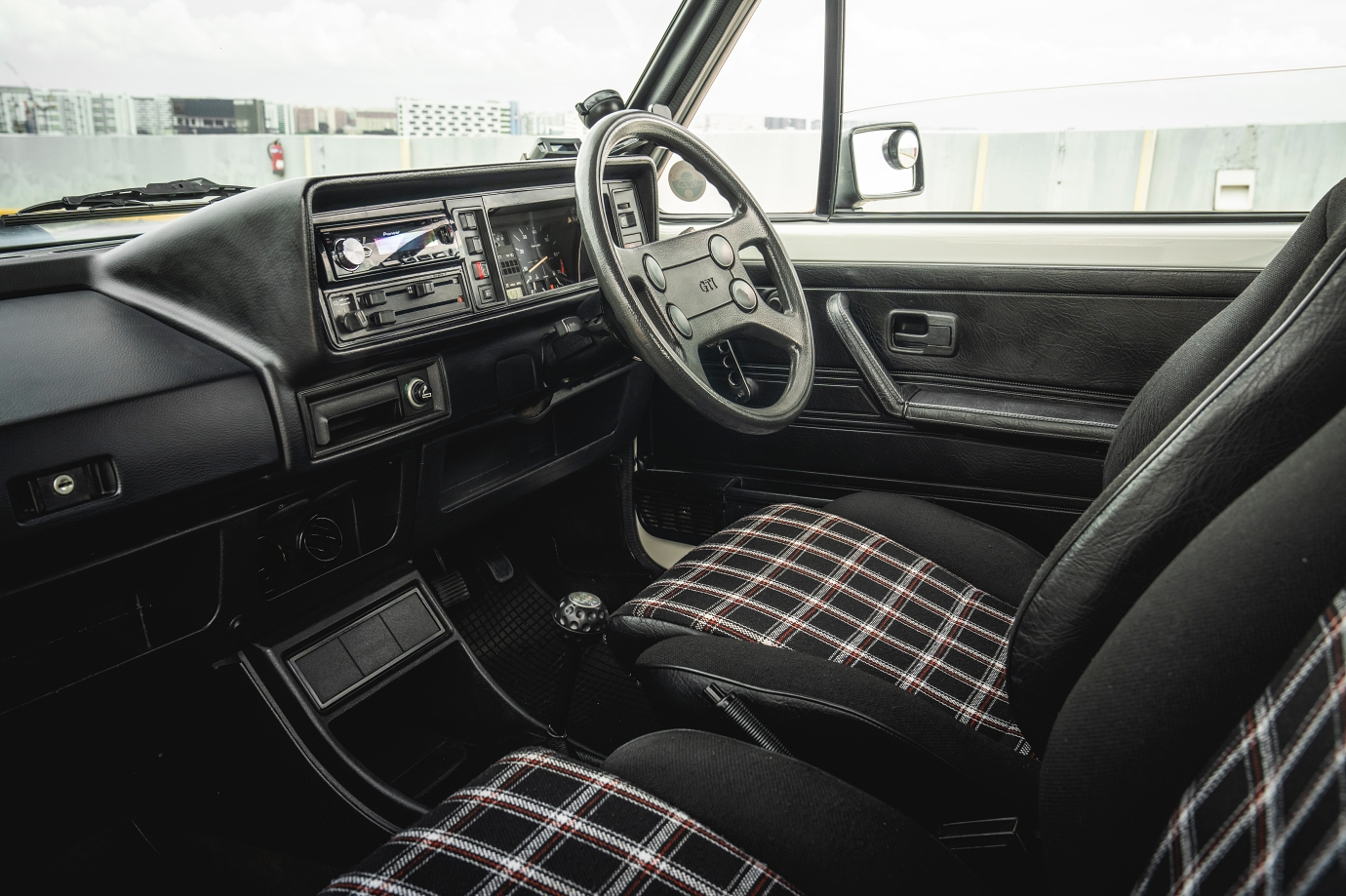
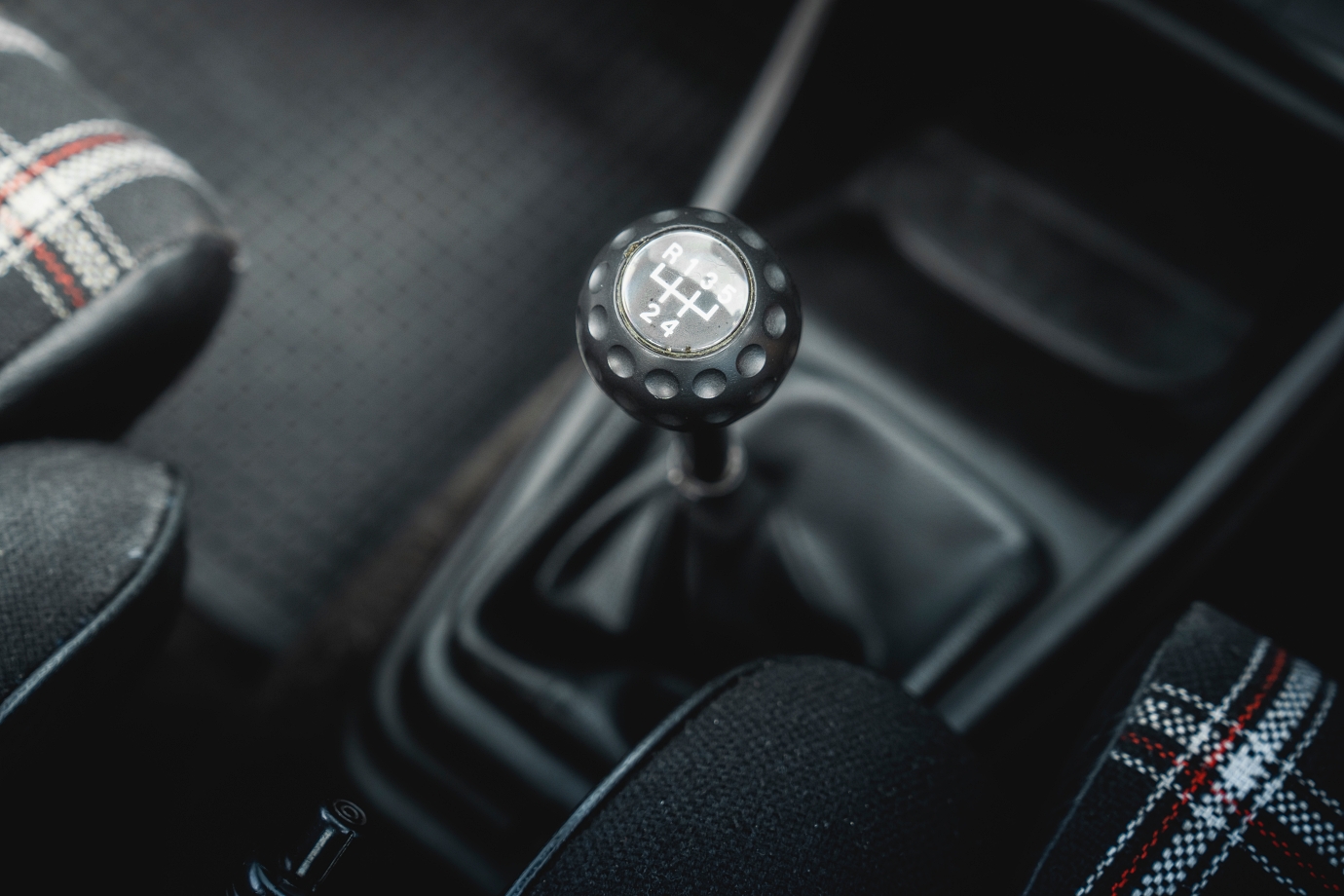
The Mk8 features the leather interior, but the signature Tartan print fabric (it’s called Scalepaper in this iteration) is still available as an option for ardent fans.
Also, in place of the whimsical dimpled golf-ball gear-knob found on manual transmission GTIs is the 7spd DSG’s minimalist shifter.
The Mk1 has seen its interior upholstery redone and although it isn’t the original print, we think it perfectly suits the vibe of the nostalgic retro-mobile.
In the Mk8, the driver’s main points of contact with the GTI are satisfyingly sporty to augment its performance credentials: grippy sports seats, solid stainless steel pedals, a chunky sports steering wheel with DSG paddle-shifters and GTI-specific displays help set the mood for a bout of fast-road thrills.
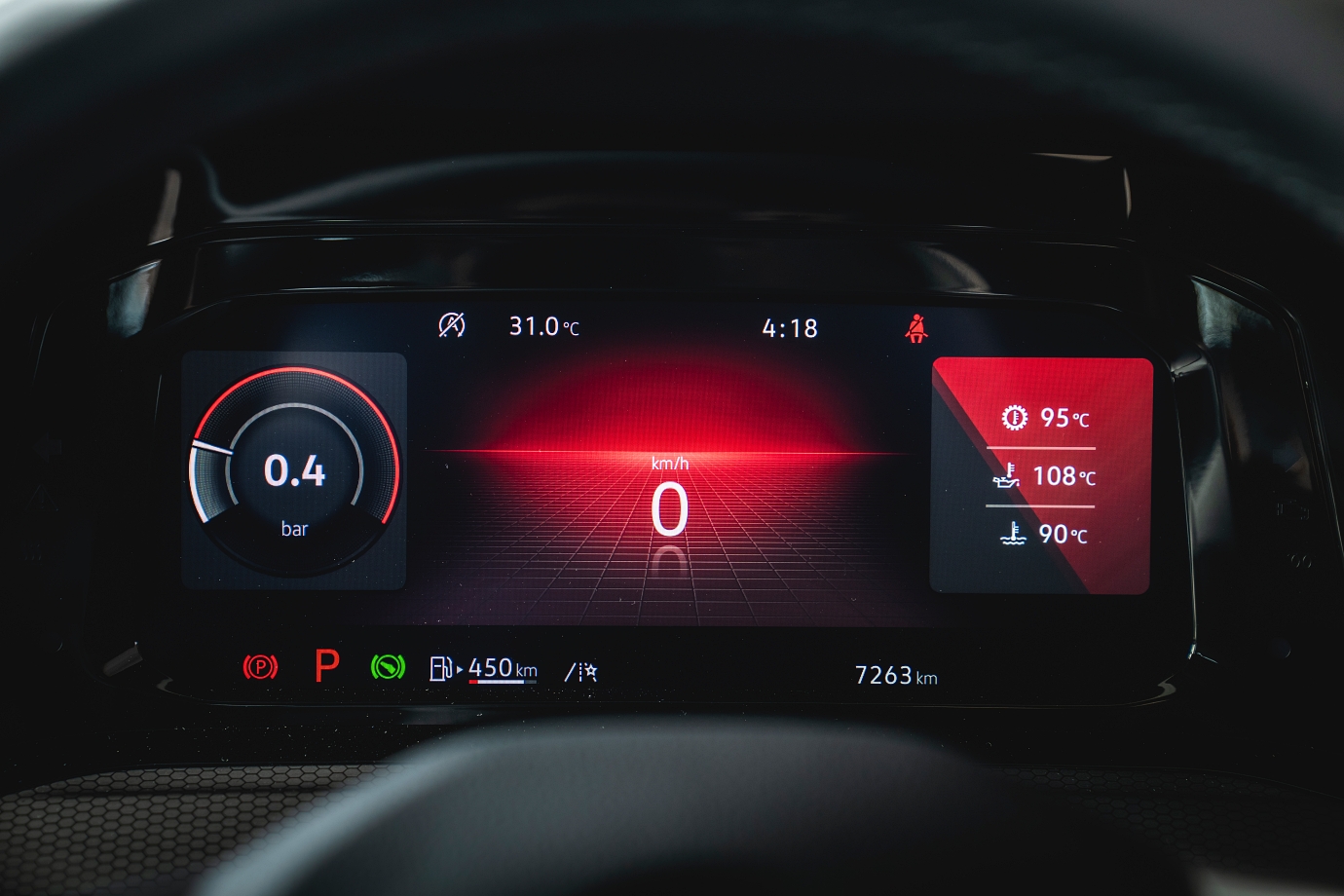
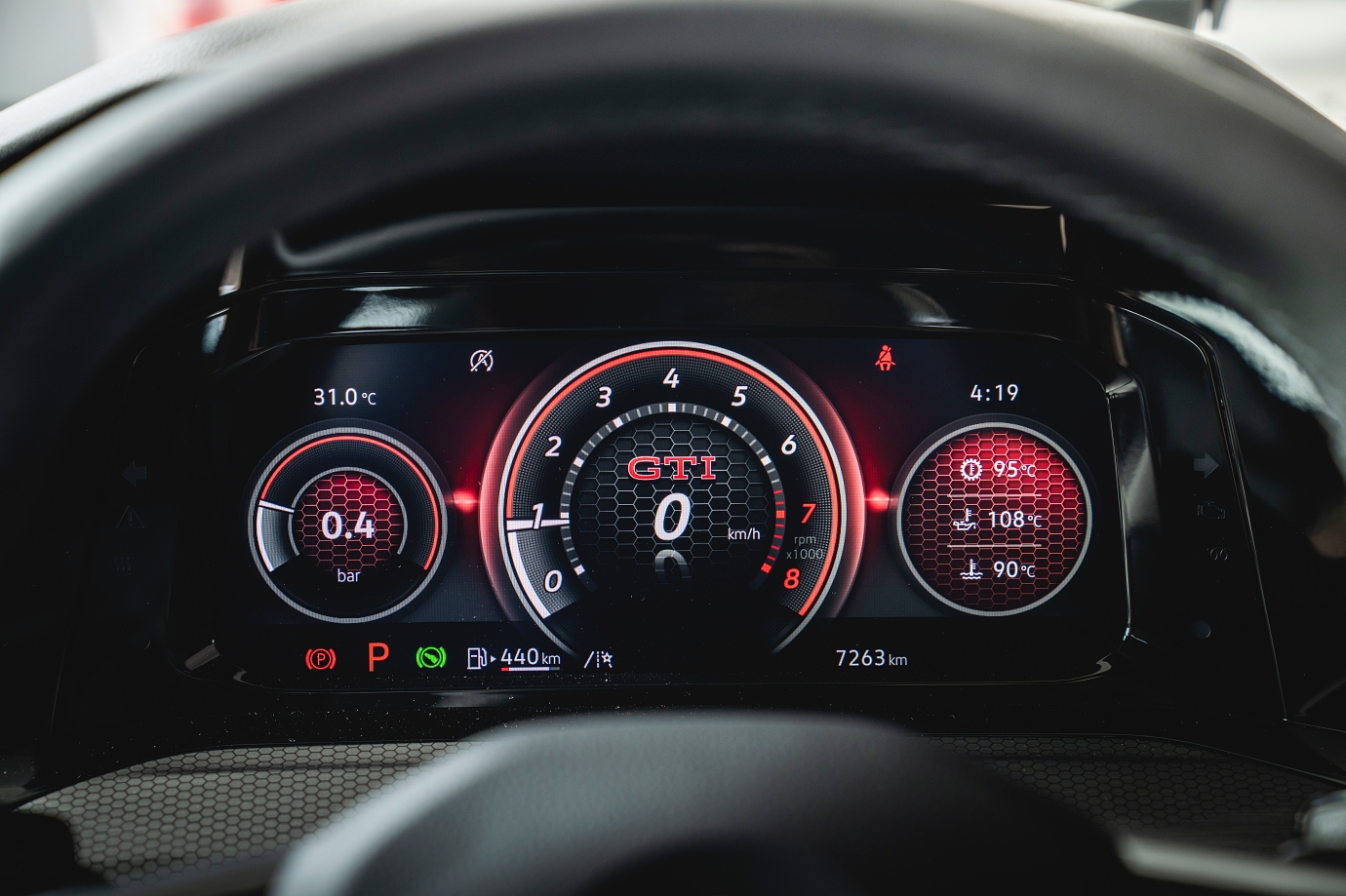
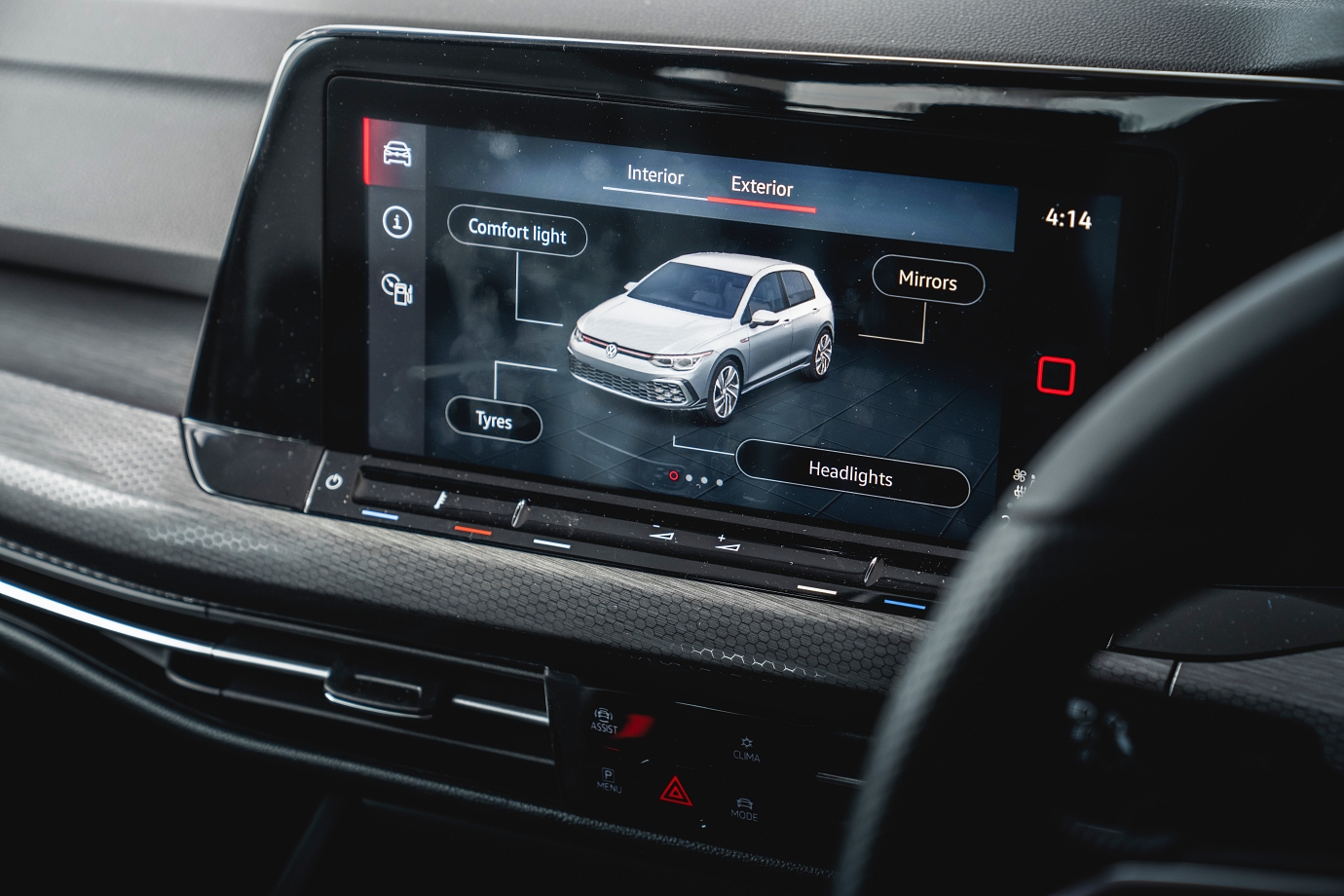
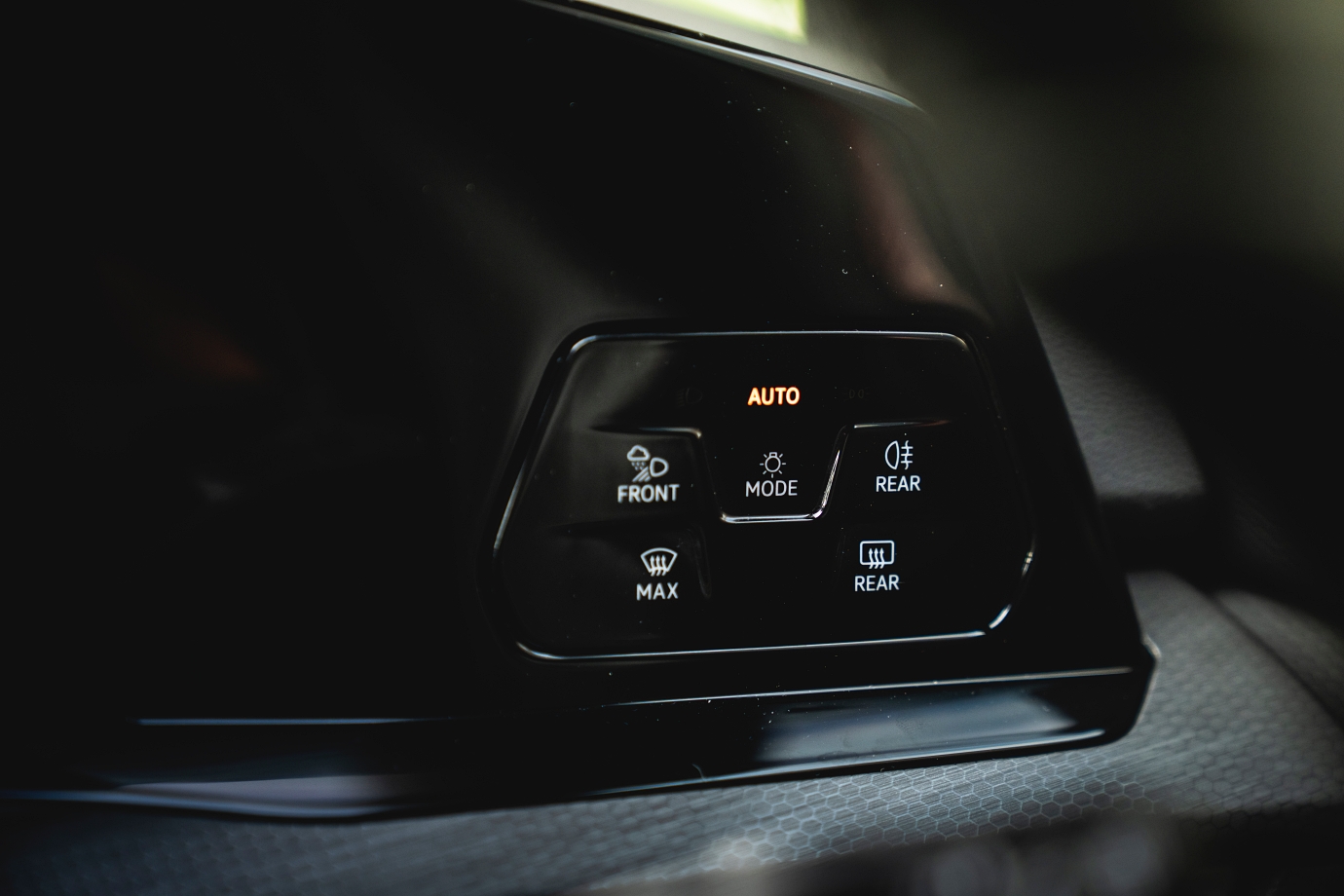
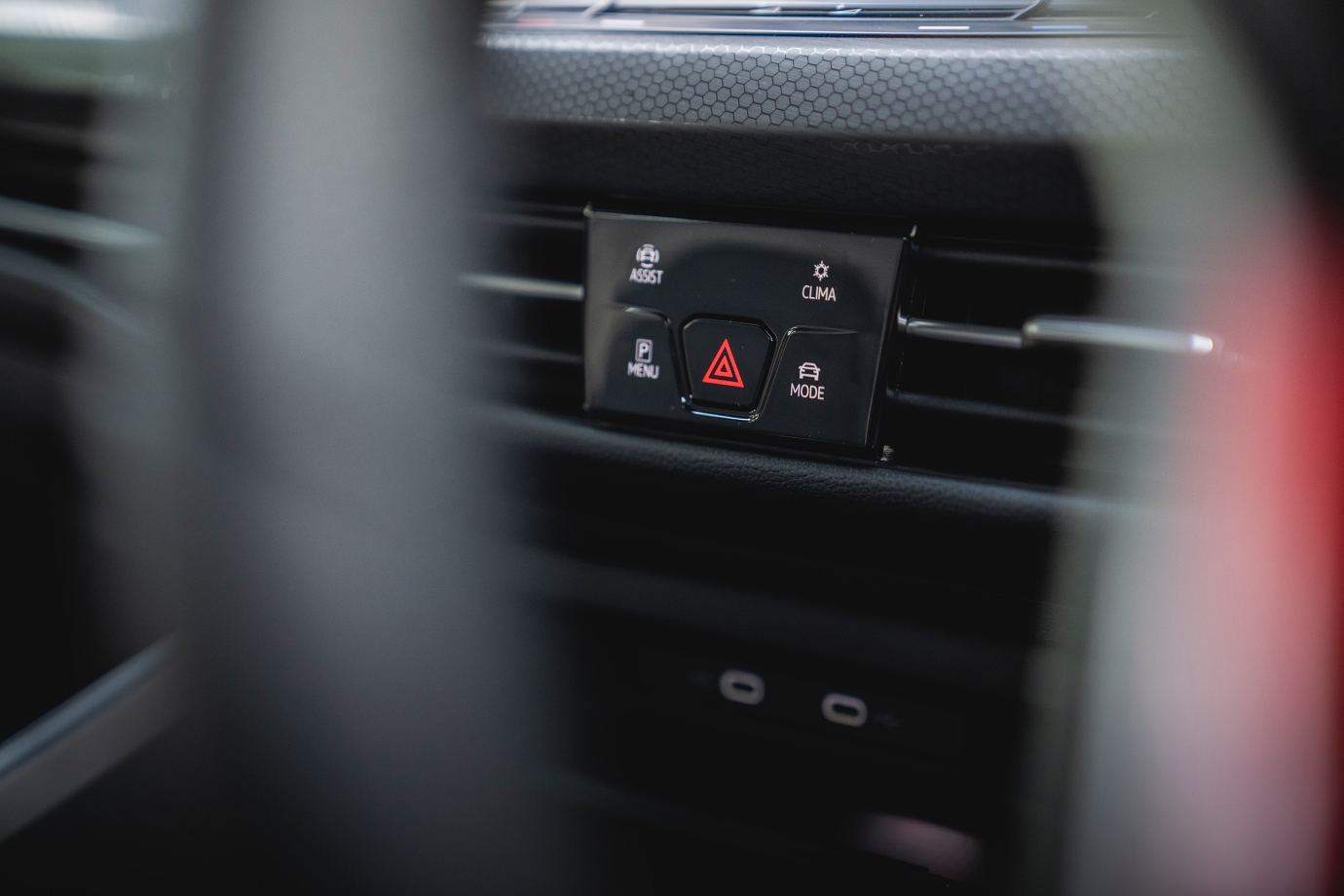
We like that the GTI digital display ‘wakes up’ the moment you open the door to get in, with the start/stop button pulsing red (like a heartbeat or missile command trigger button) until you hit it to fire up the ‘EA888 evo4’ turbocharged 2.0-litre TSI engine.
Despite the digitalisation of the Mk8’s cabin with the Digital Cockpit treatment, there’s a sense of simplicity that is similar to the Mk1’s, because there’s no mess of physical knobs, buttons and rocker switches in the dash and centre-console.
The Mk8’s controls for dynamic/drive/climate/entertainment are accessed using the vivid 10.25-inch touchscreen, multi-function steering wheel or discreet haptic switchgear integrated tidily into the centre fascia. It’ll take a short period of acclimatisation, but accessing the different functions quickly becomes second nature.
Like the original GTI, the driving ergonomics are spot-on, with snug seats, good visibility out and switchgear that falls readily to hand when needed.
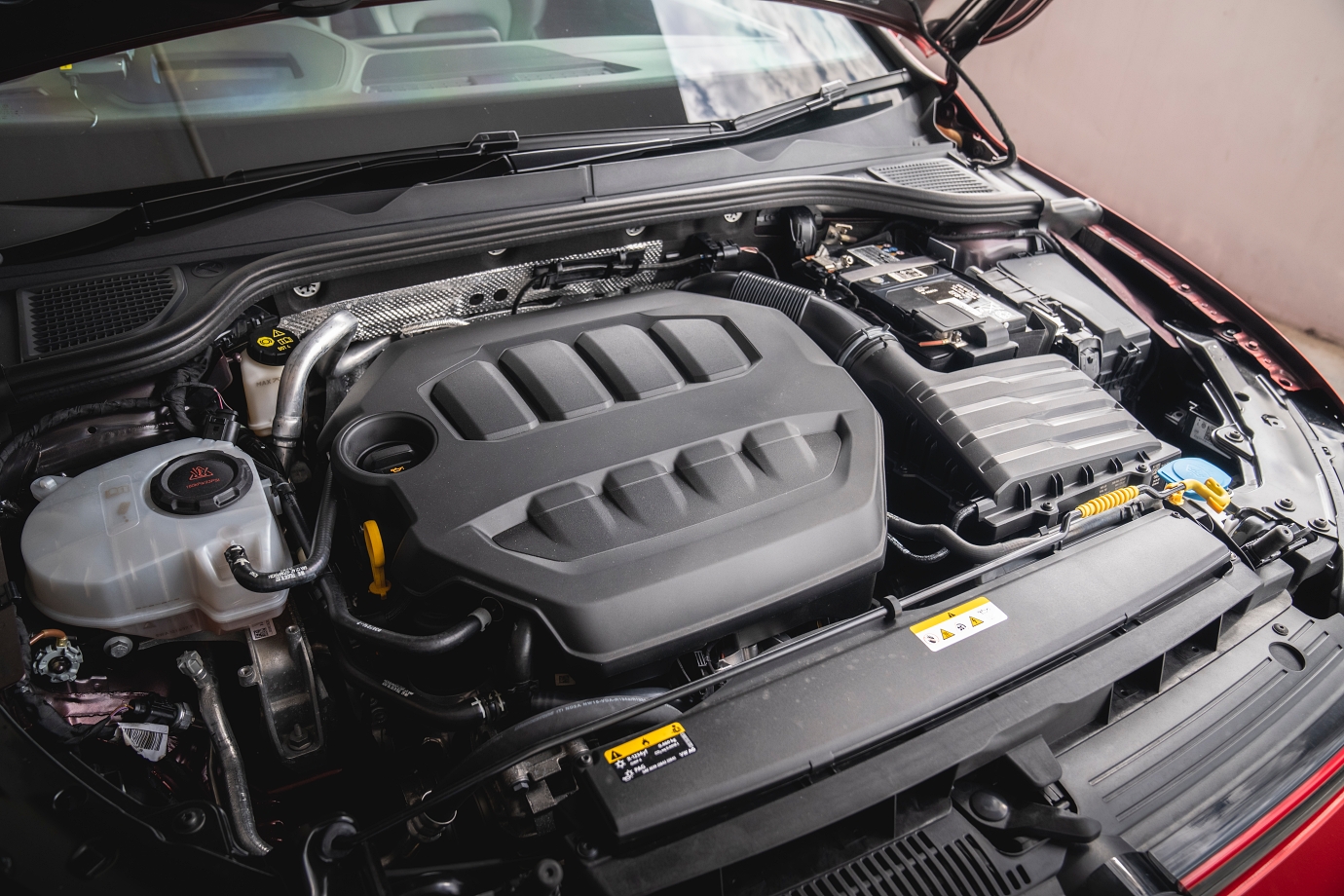
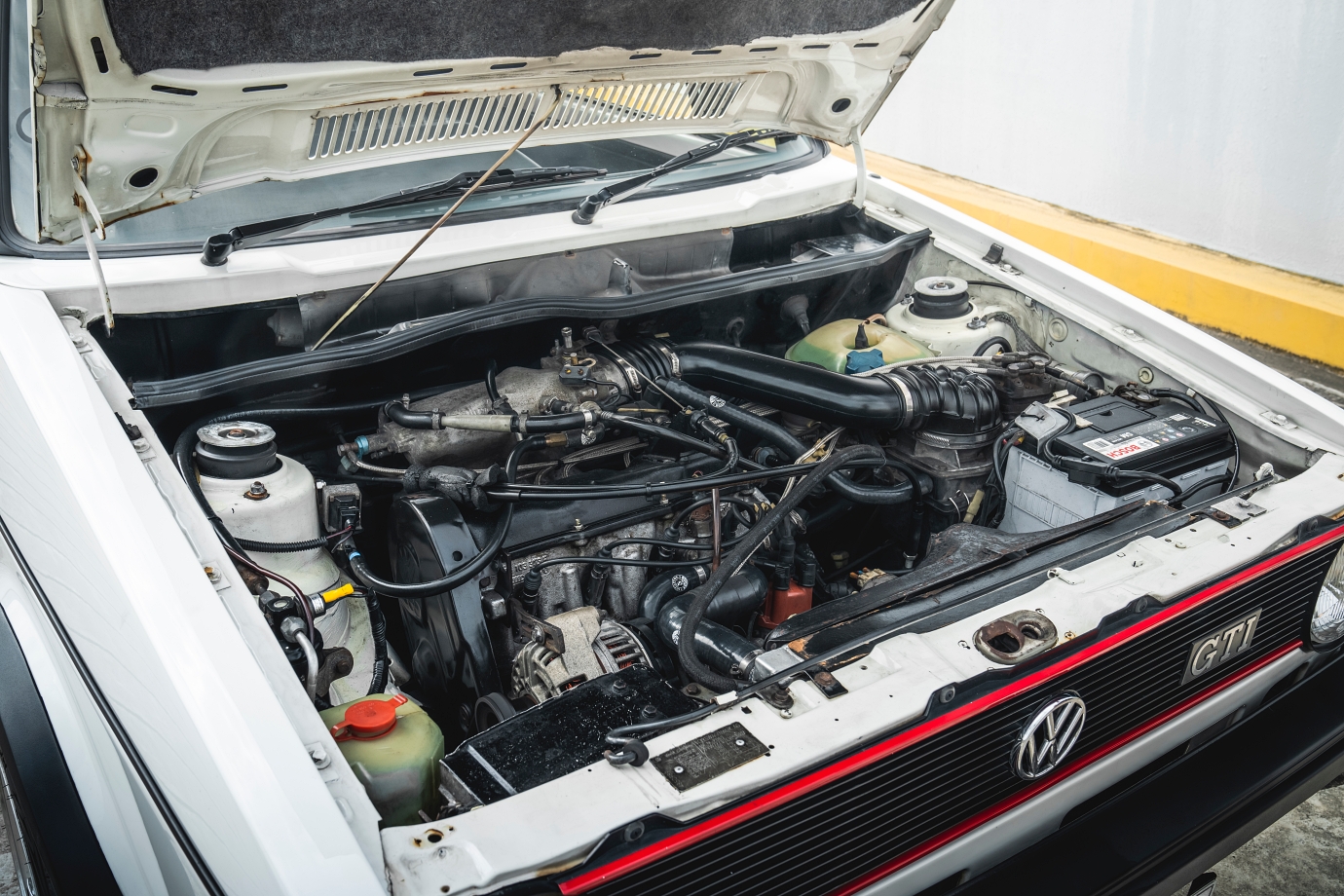
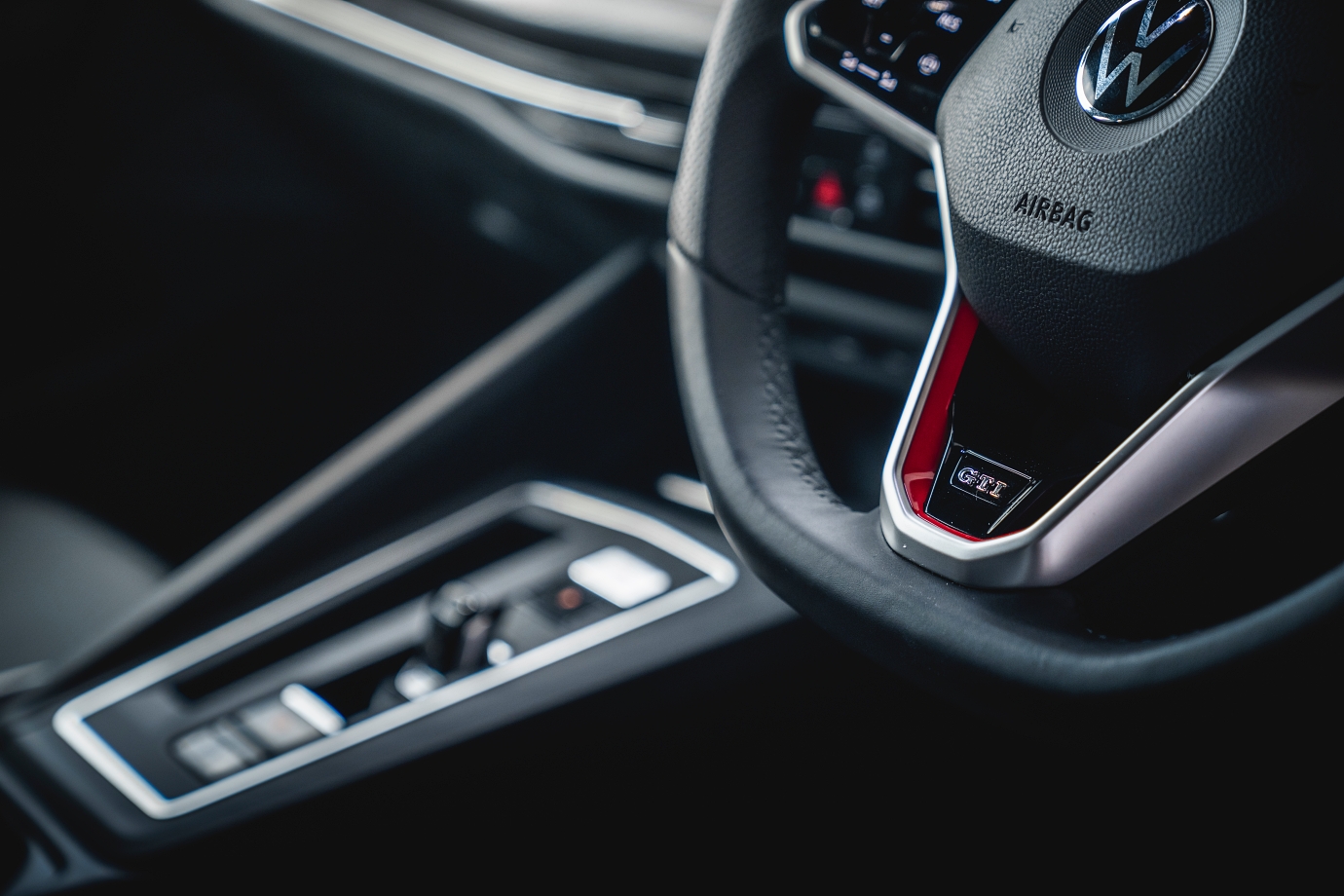
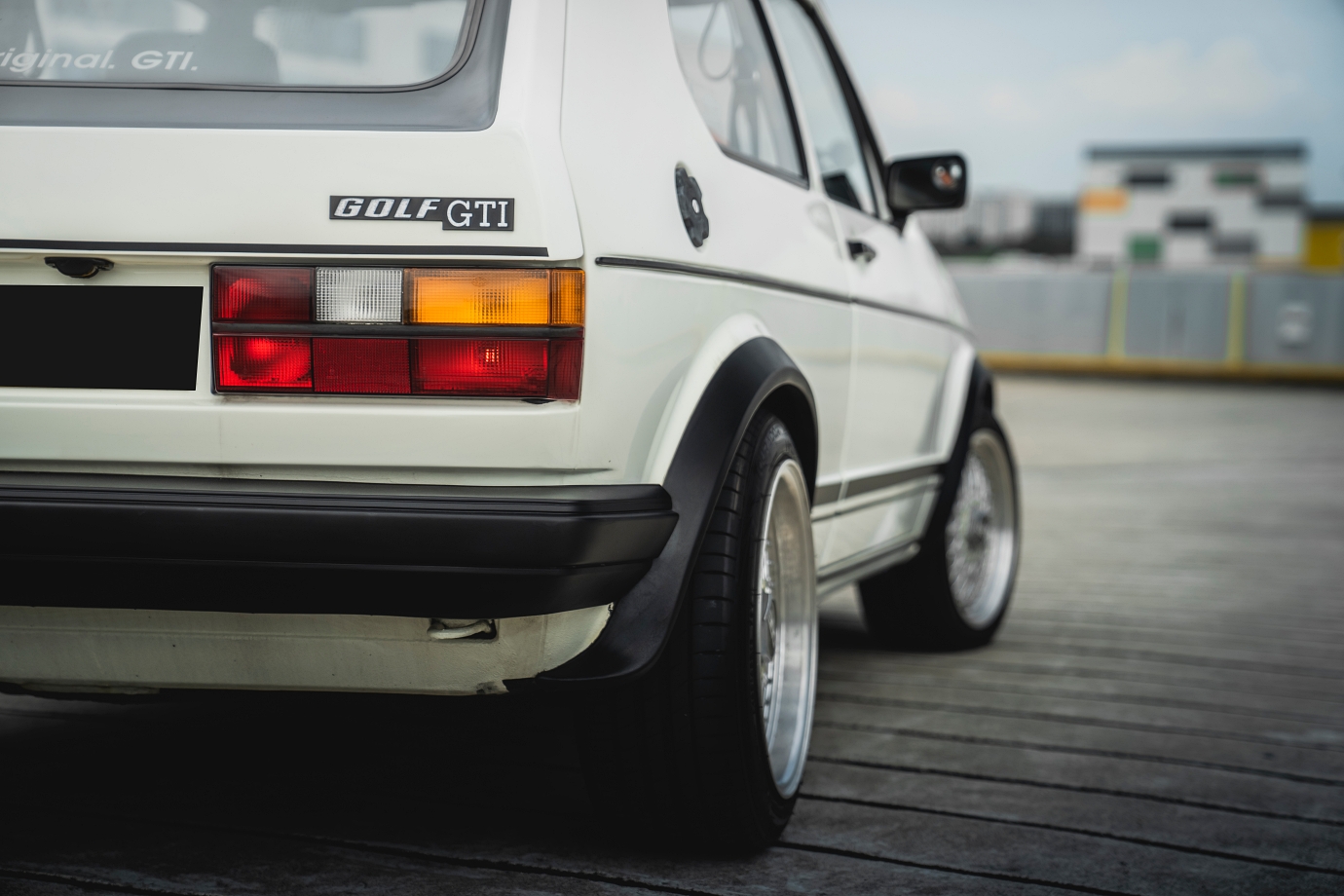
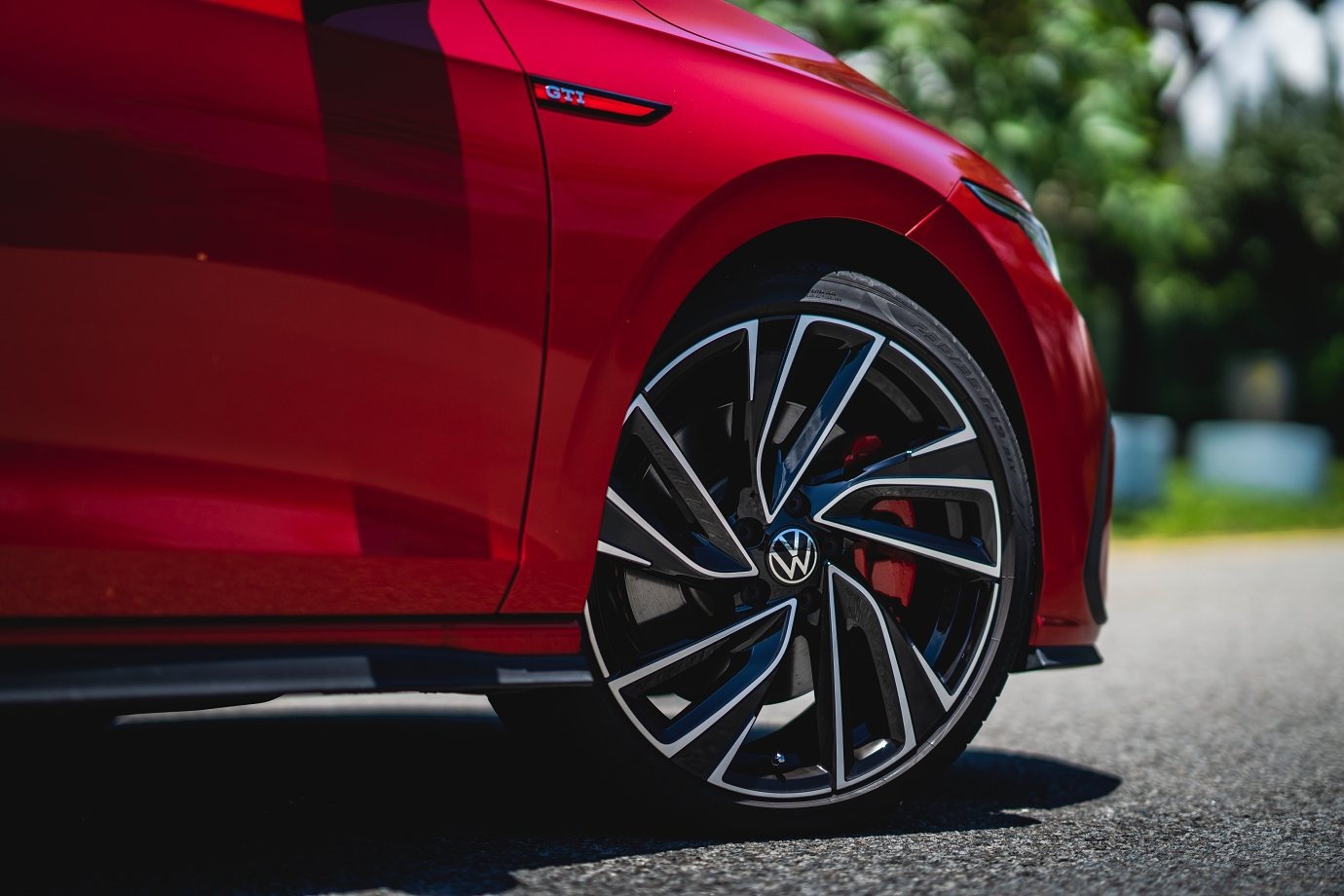
The 245hp/370Nm engine awakens to life with a grumpy ‘harumph!’ when you hit the start/stop trigger - decent poke for a feisty runabout without having to worry about your license.
The ride on the 19s is firm but pliant, with taut body-control while cornering. There's good weighting to the steering and brakes, which inspires enough confidence in both wet and dry.
Driven briskly, there's ample grip and gumption from both chassis and engine to make light work of your daily commute, especially as you work your way up/down the 7spd DSG ratios.
However, the magic really starts when you push harder and start playing with the throttle and weight transfers down a series of corners, because that's when you discover and come to appreciate the playfulness that has endeared generations of the Golf GTI to its legion of fans.
We'd have preferred a physical button to toggle the ESP on/off, but this is a comment that only a small group of drivers will find relevant, which is probably why it is kept under a few sub-menus.
Now, the Mk1's 1.6 may ‘only’ field 110hp/140Nm via a 5spd manual, but don’t forget its 800+kg kerbweight means these modest numbers translate to a decently brisk pace.
K, who daily-drives his Mk1 GTI, is no stranger to Golfs and has gone through a repertoire that includes Mk3 1.6 CL, Mk3 VR6 and Mk5 GTI. After all that, he’s come full circle with the original that started it all!
Naturally, I offered him a quick go in the Mk8 GTI. “The car feels grown-up, the DSG shifts well, there’s ample tech and the DCC adaptive chassis control deals with the worst the roads can throw its way. It’s not as raw as my Mk1 though,” K says.
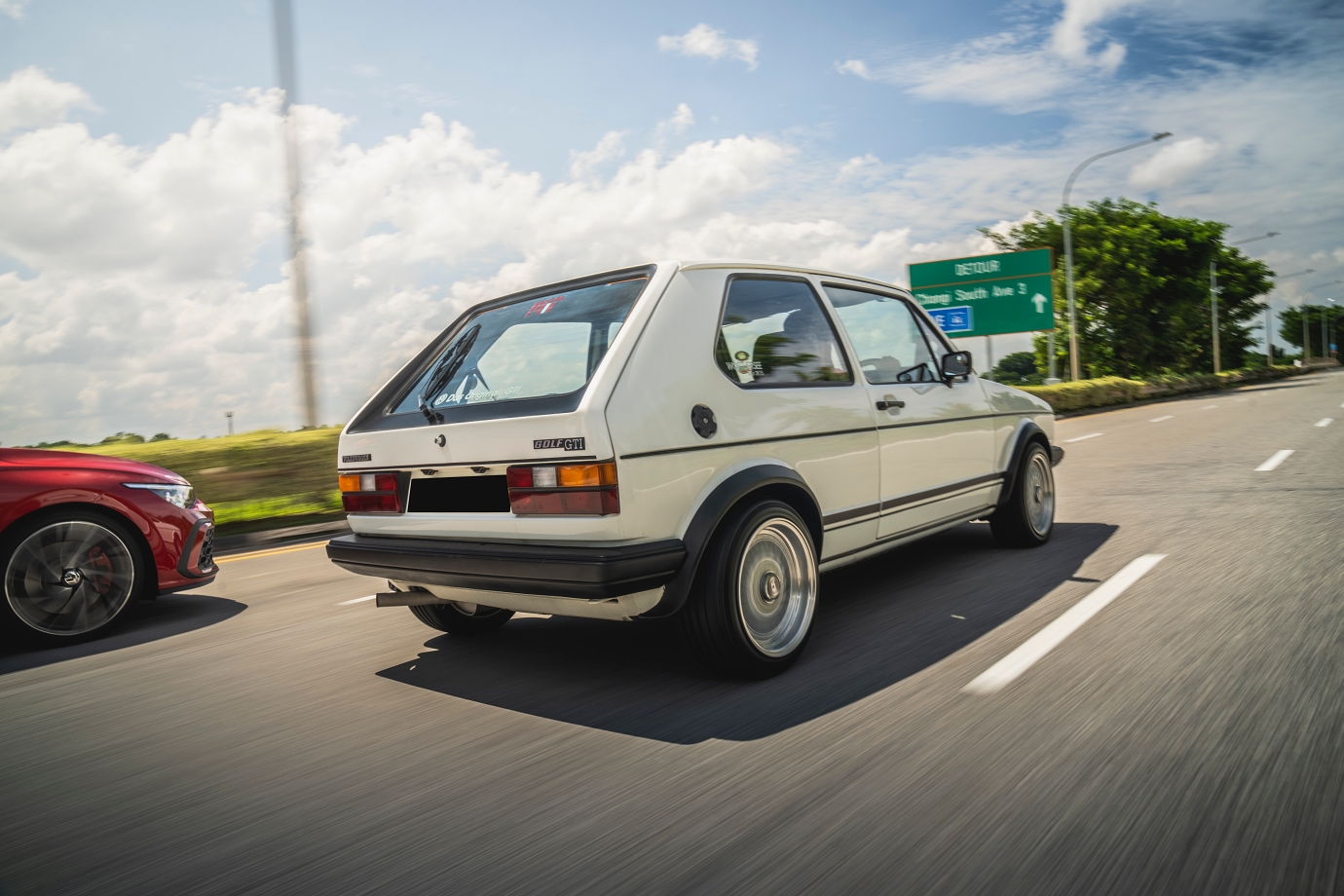
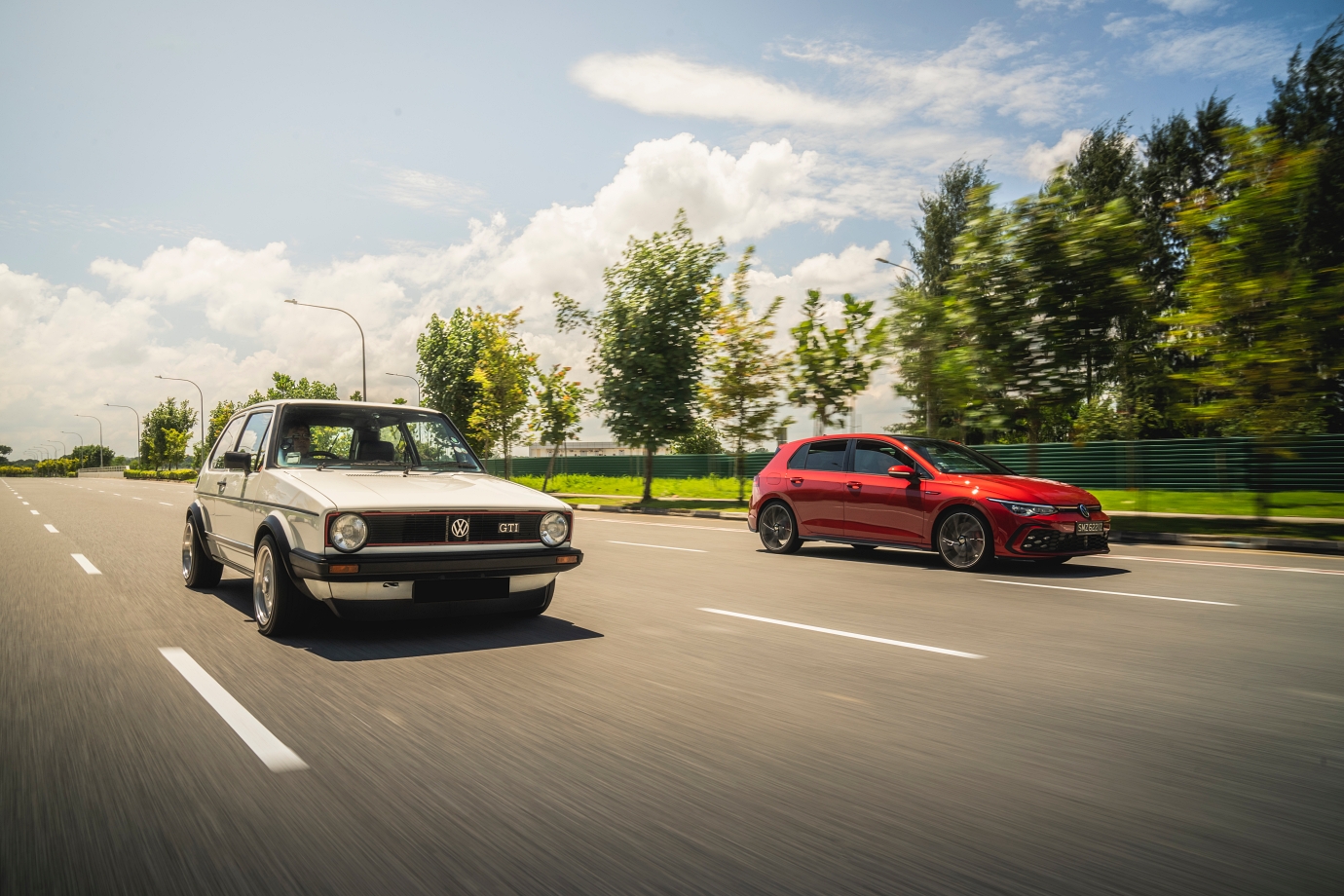
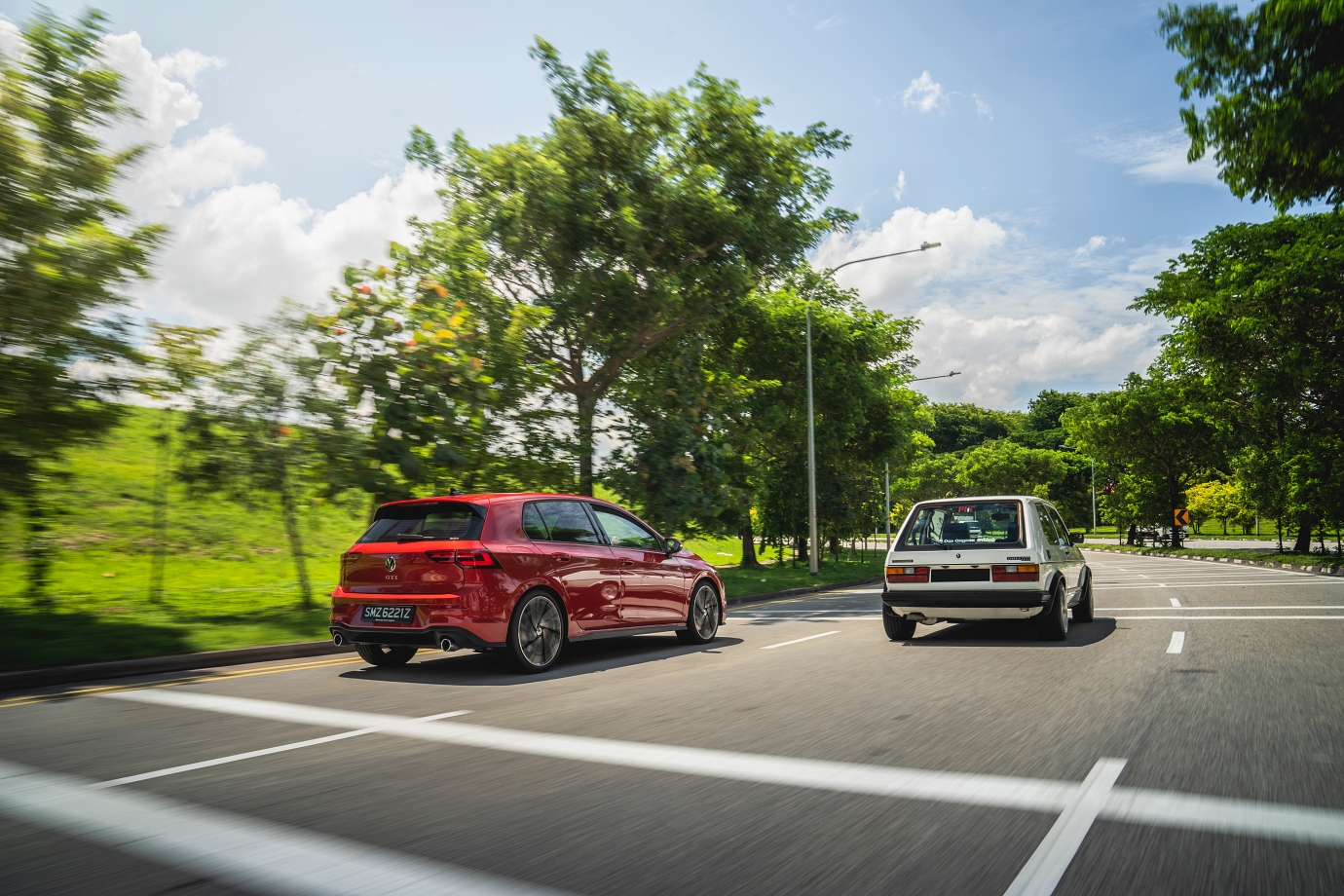
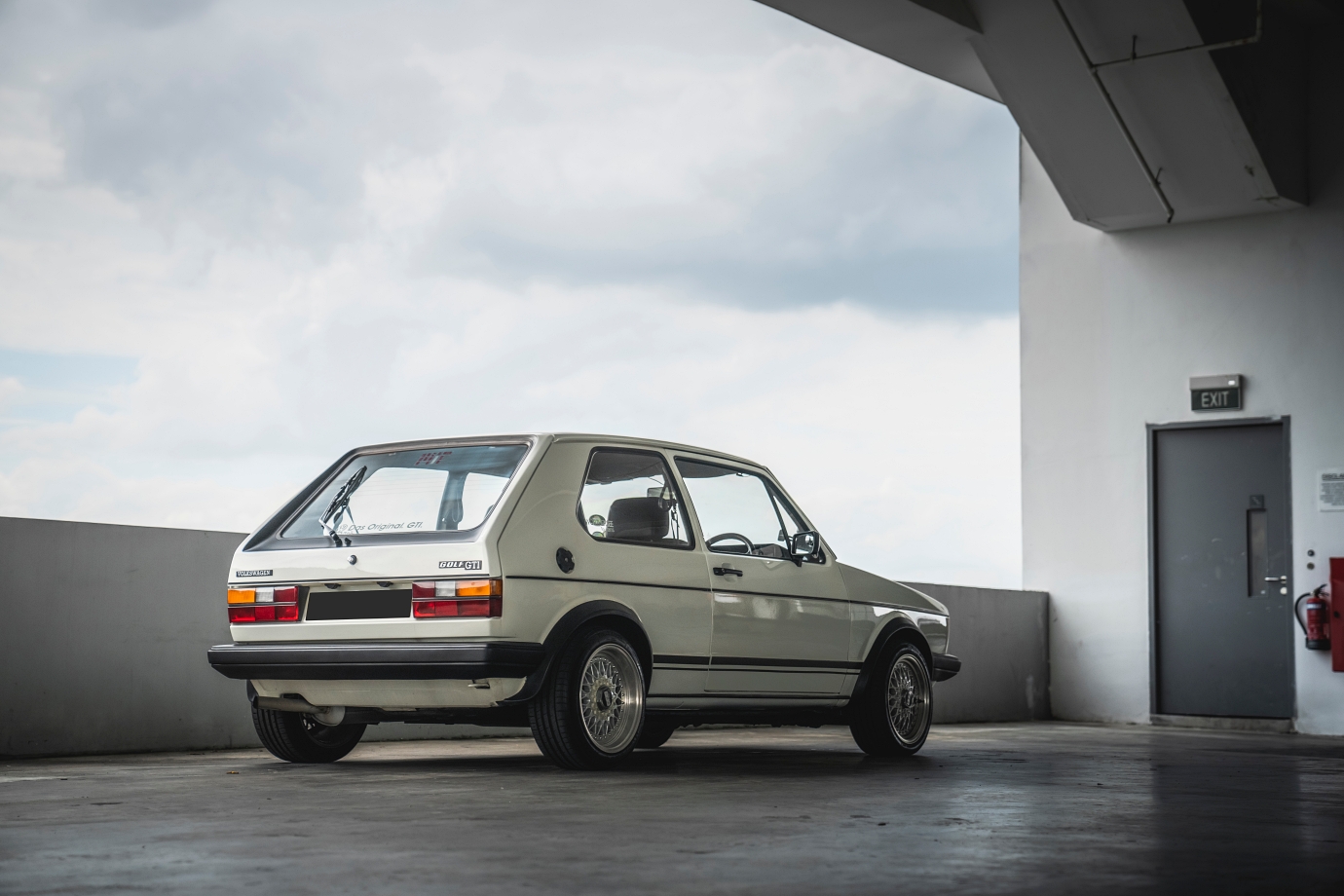
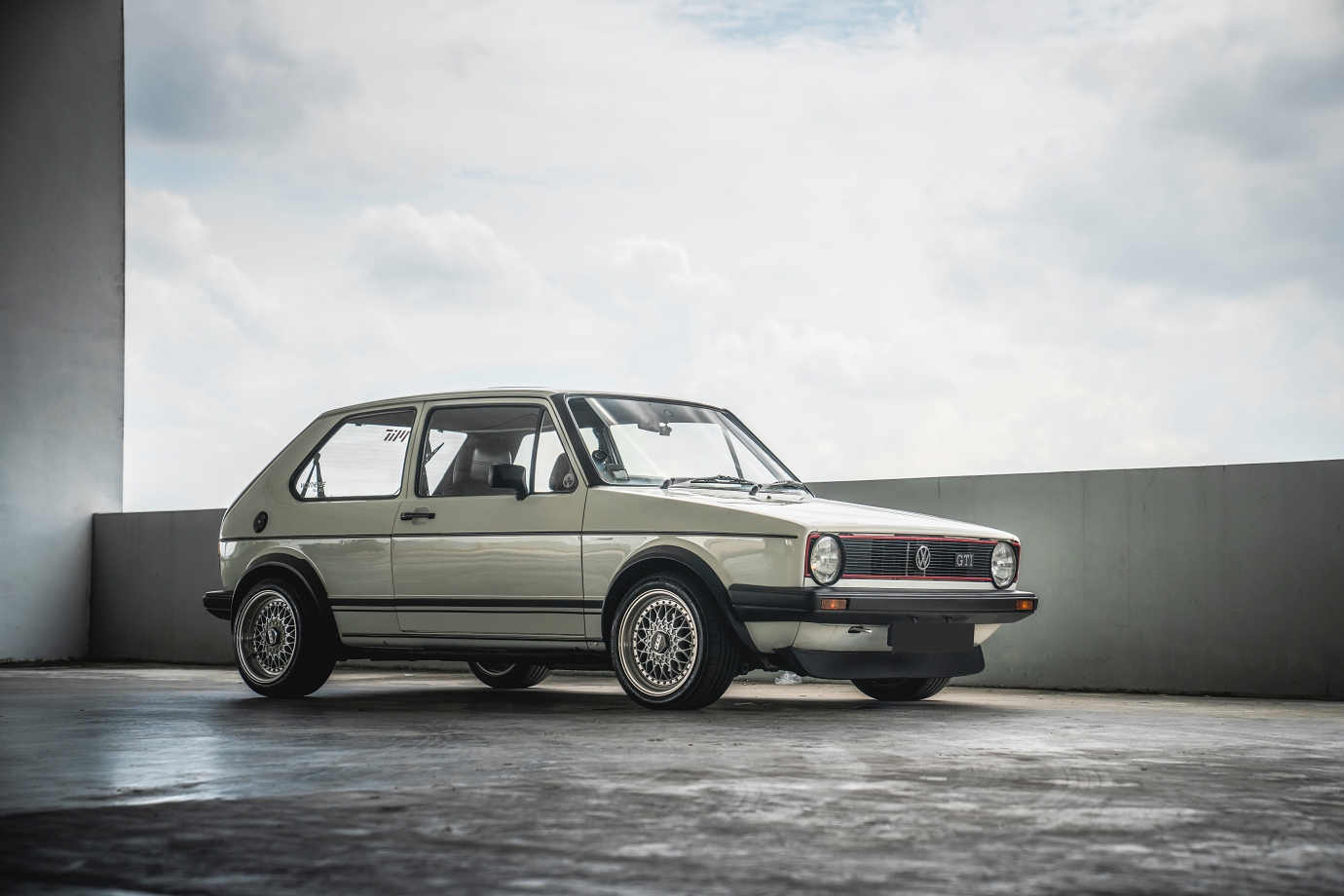
Of course, this was just an excuse for me to get into the Mk1! The Mk1 is an analogue delight to drive and thrills us oldies with the right steering and aural ‘feels’.
Part of the joy comes from the physical work involved in orchestrating steering, pedals and 5spd manual to achieve a brisk pace along the winding roads.
Finding a good tyre to fit the original 13-inch rims hasn’t been easy, so K runs the car on aftermarket 15s and we reckon the car would have been even more lively on the 13s.
As a side-note, this author had a Mk2 Golf GTI before, an 8-valve 1.8-litre engine that came on post-1982 Mk1 GTIs. Even from Mk1 to Mk2 GTI, the evolution in refinement and tech updates is very apparent (which should tell you a lot about the 40-year gap between Mk1 and the latest Mk8).
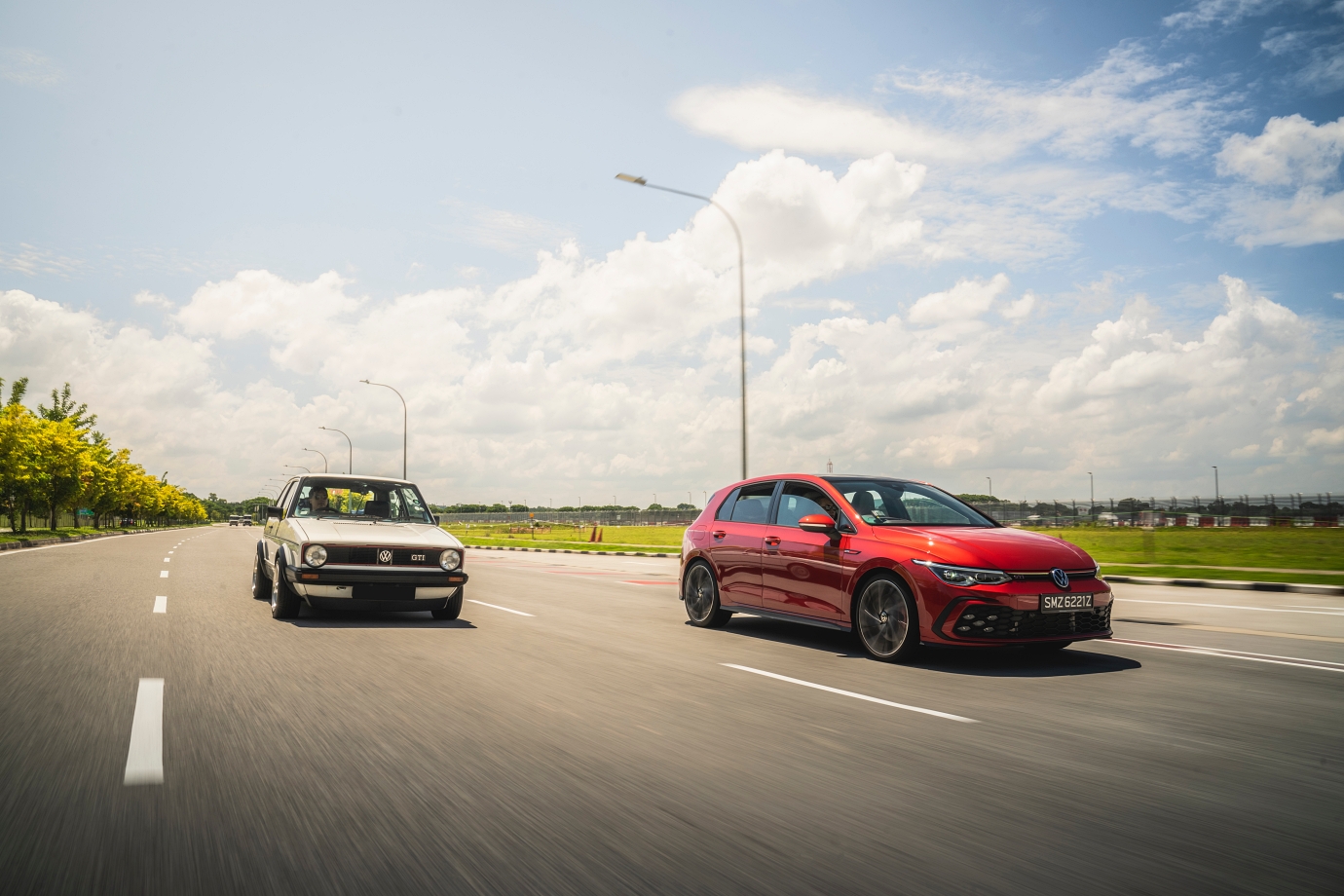
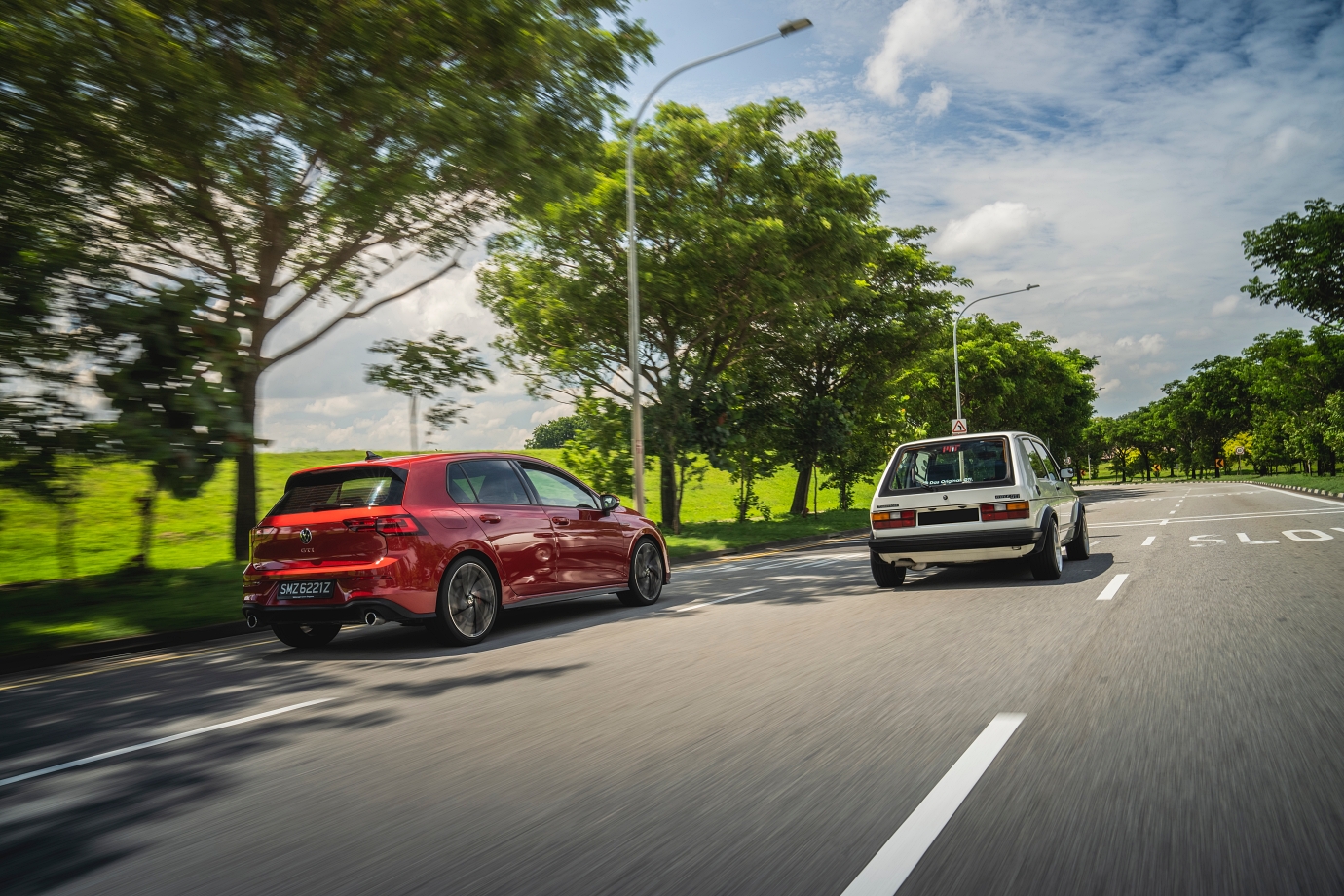
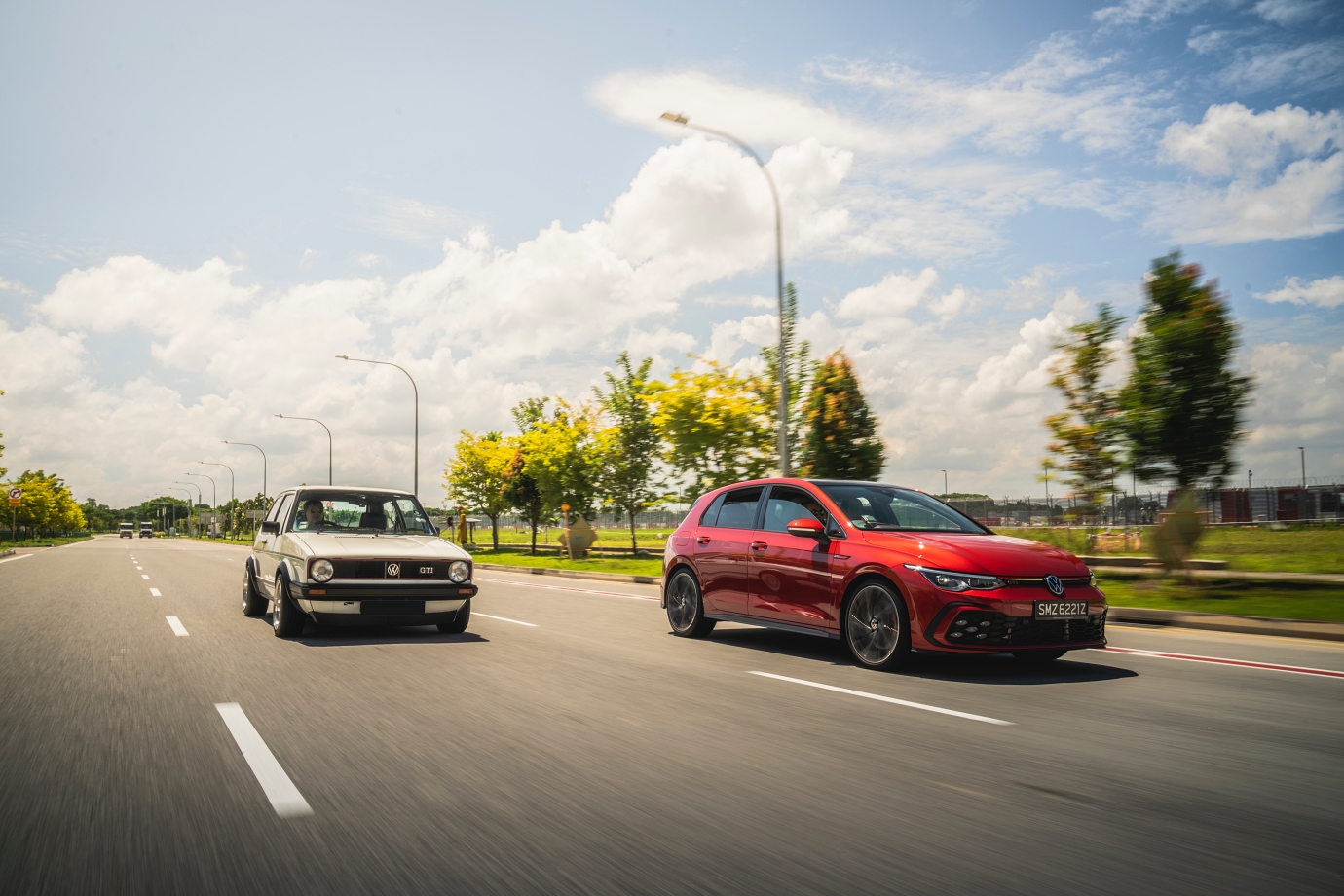
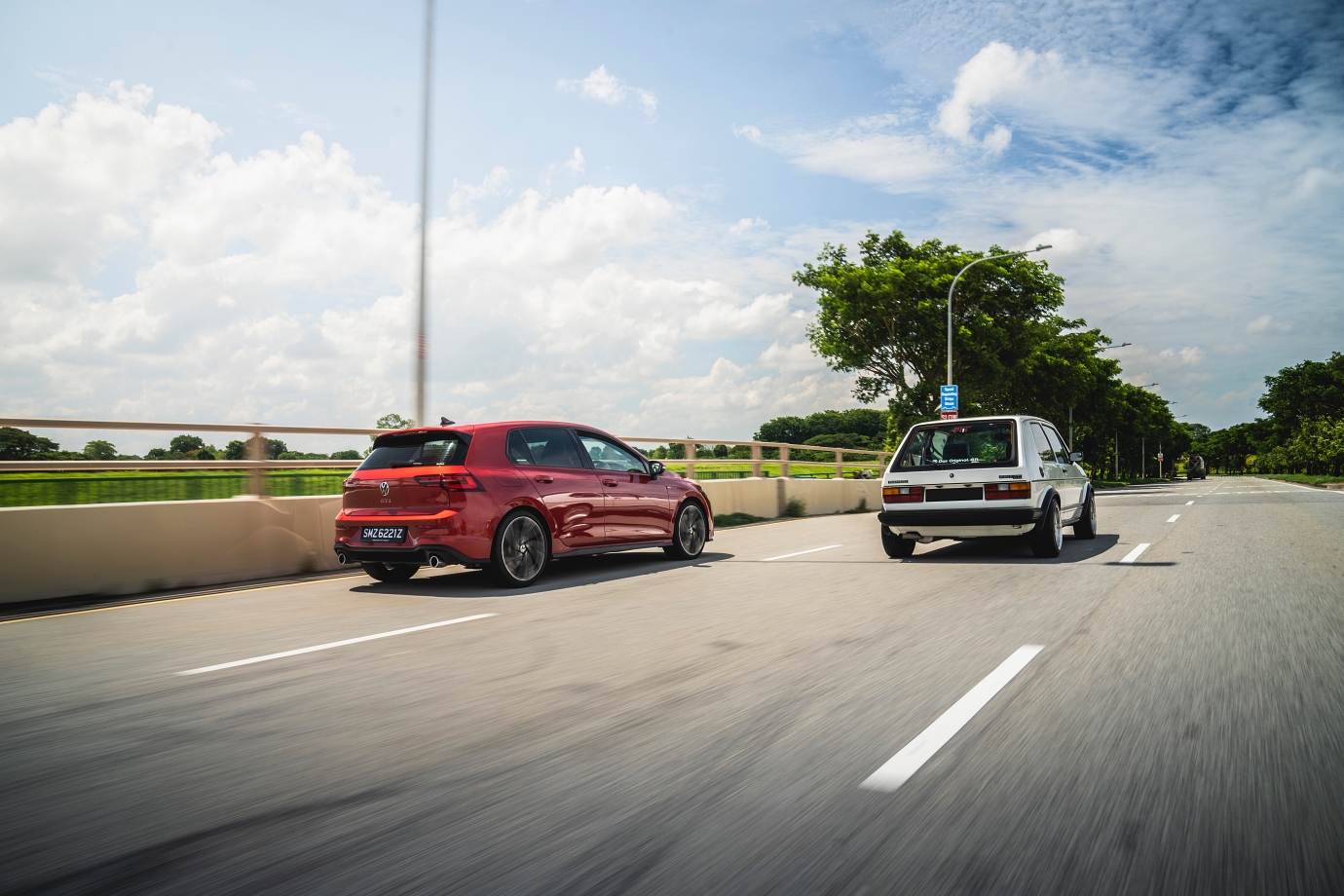
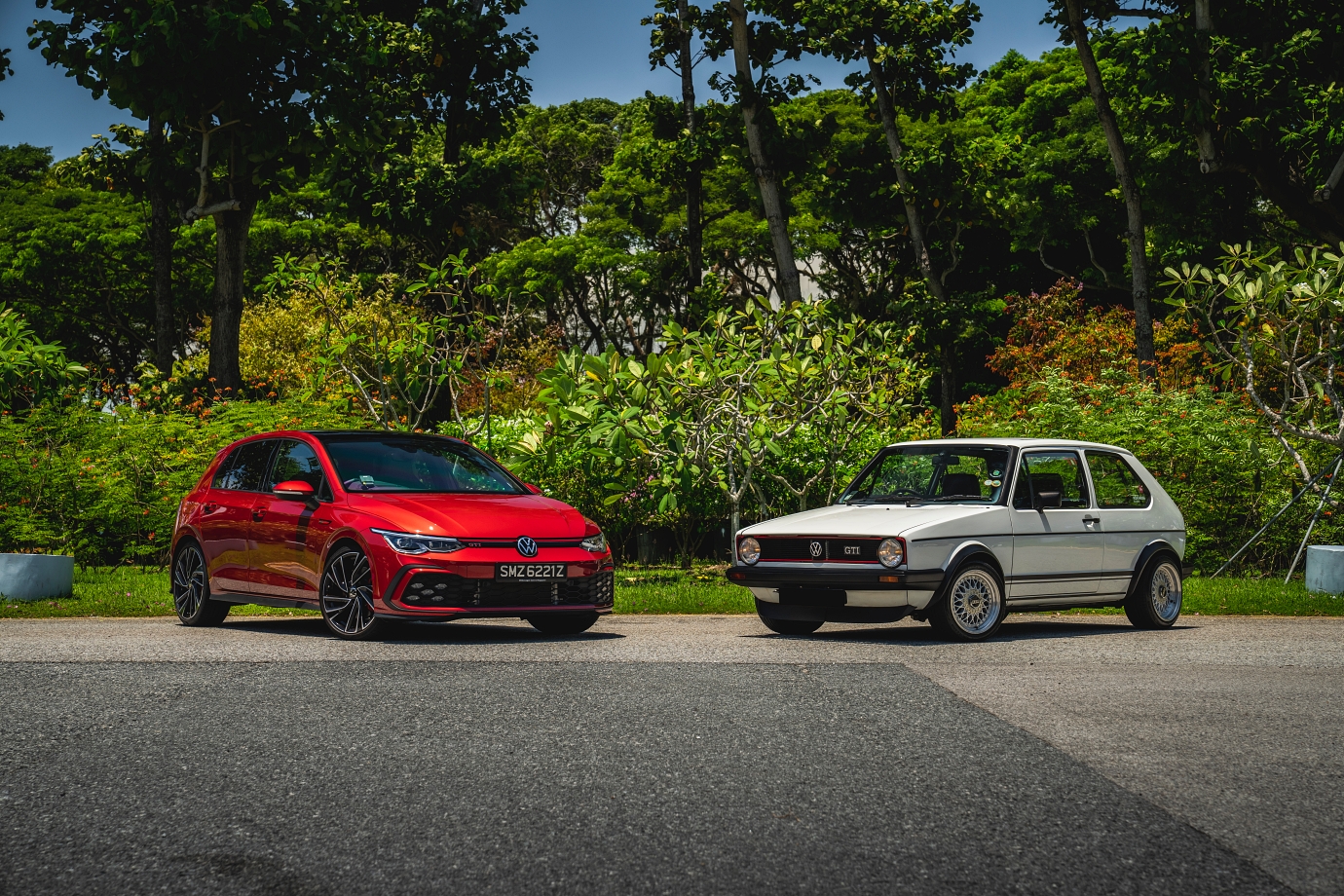
And this is the beauty of the evergreen Golf GTI. When everything else seems to change, the core principles that make the Golf GTI a Golf GTI stay the same.
We had to ask though, “Why all the Golfs?” K explains, “The Golf range is an all-in-one package: reliable, dependable and practical. From soccer moms to petrolheads, there’s something for everyone and it never feels compromised. Be it CL or GTI, my Golfs have always had space for groceries, luggage and moving people around. Furthermore, the GTI is tunable for those who want more power.”
As the GTI evolved through the generations, it has held true to the original brief of being a fun-to-drive front-drive hatchback, even if it has seen all the rough and raw edges smoothed away.
The modern Golf GTI that started with the Mk5 came-of-age with the Mk7, but the Mk8 clearly sets the stage for the future, as it injects the feisty hatchback with the fresh tech necessary to stay relevant and evergreen for the digital age.
PHOTOS Zotiq Visuals
2021 Volkswagen Golf GTI 2.0 TSI
Engine 1984cc, inline4, turbo
Power/rpm 245hp/5000-6500rpm
Torque/rpm 370Nm/1600-4300rpm
Transmission 7spd dual-clutch DSG
0-100km/h 6.4secs
Top Speed 250km/h
Fuel Consumption 6.5l/100km (combined)
CO2 149g/km
1981 Mk1 Volkswagen Golf GTI
Engine: 1588cc, inline4, 8v
Power/rpm: 110hp/6100rpm
Torque/rpm: 140Nm/5000rpm
Transmission: 5spd manual
0-100km/h: 9.2secs
Top speed: 181km/h
Kerbweight: est. 840kg

